Made in Taiwan? How a Frenchman Fooled 18th-Century London
April 18, 2018
Books & History
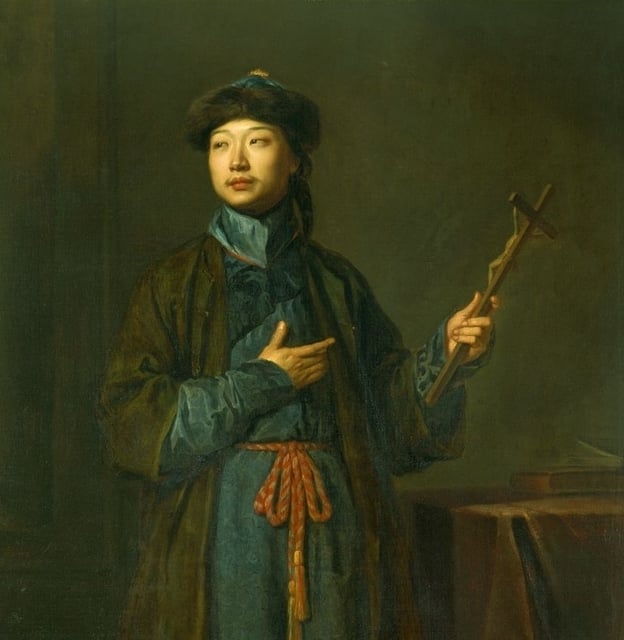 Benjamin Breen on the remarkable story of George Psalmanazar, the mysterious Frenchman who successfully posed as a native of Formosa (now modern Taiwan) and gave birth to a meticulously fabricated culture with bizarre customs, exotic fashions, and its own invented language.
Illustrating Carnival: Remembering the Overlooked Artists Behind Early Mardi Gras
February 7, 2018
Art & History
Benjamin Breen on the remarkable story of George Psalmanazar, the mysterious Frenchman who successfully posed as a native of Formosa (now modern Taiwan) and gave birth to a meticulously fabricated culture with bizarre customs, exotic fashions, and its own invented language.
Illustrating Carnival: Remembering the Overlooked Artists Behind Early Mardi Gras
February 7, 2018
Art & History
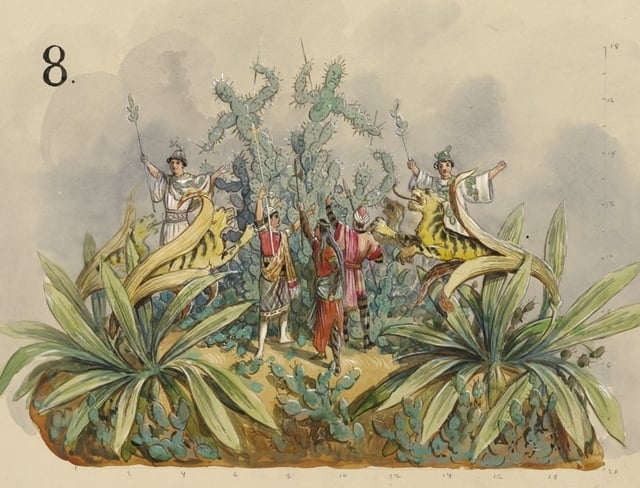 For more than 150 years the city of New Orleans has been known for the theatricality and extravagance of its Mardi Gras celebrations. Allison C. Meier looks at the wonderfully ornate float and costume designs from Carnival’s “Golden Age” and the group of New Orleans artists who created them.
Pods, Pots, and Potions: Putting Cacao to Paper in Early Modern Europe
December 7, 2017
Science & Art & History
For more than 150 years the city of New Orleans has been known for the theatricality and extravagance of its Mardi Gras celebrations. Allison C. Meier looks at the wonderfully ornate float and costume designs from Carnival’s “Golden Age” and the group of New Orleans artists who created them.
Pods, Pots, and Potions: Putting Cacao to Paper in Early Modern Europe
December 7, 2017
Science & Art & History
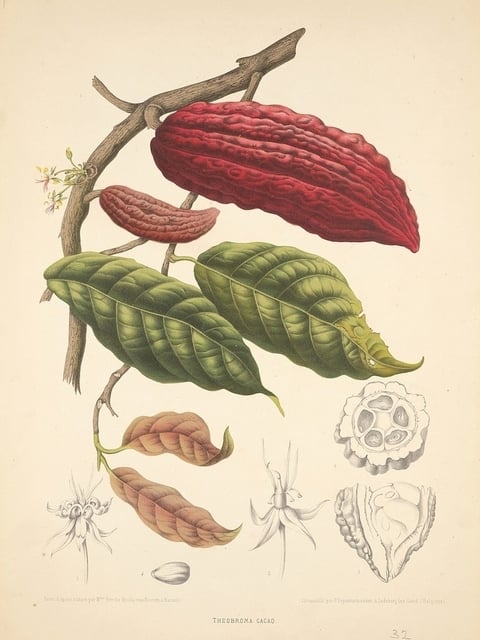 Christine Jones explores the different ways the cacao tree has been depicted through history — from 16th-century codices to 18th-century botanicals — and what this changing iconography reveals about cacao’s journey into European culture.
Brief Encounters with Jean-Frédéric Maximilien de Waldeck
November 22, 2017
Art & History
Christine Jones explores the different ways the cacao tree has been depicted through history — from 16th-century codices to 18th-century botanicals — and what this changing iconography reveals about cacao’s journey into European culture.
Brief Encounters with Jean-Frédéric Maximilien de Waldeck
November 22, 2017
Art & History
 Not a lot concerning the artist, erotic publisher, explorer, and general enigma Count de Waldeck can be taken at face value, and this certainly includes his fanciful representations of ancient Mesoamerican culture which — despite the exquisite brilliance of their execution — run wild with anatopistic lions, elephants, and suspicious architecture. Rhys Griffiths looks at the life and work of one of the 19th century’s most mysterious and eccentric figures.
Flash Mob: Revolution, Lightning, and the People’s Will
November 9, 2017
Art & History
Not a lot concerning the artist, erotic publisher, explorer, and general enigma Count de Waldeck can be taken at face value, and this certainly includes his fanciful representations of ancient Mesoamerican culture which — despite the exquisite brilliance of their execution — run wild with anatopistic lions, elephants, and suspicious architecture. Rhys Griffiths looks at the life and work of one of the 19th century’s most mysterious and eccentric figures.
Flash Mob: Revolution, Lightning, and the People’s Will
November 9, 2017
Art & History
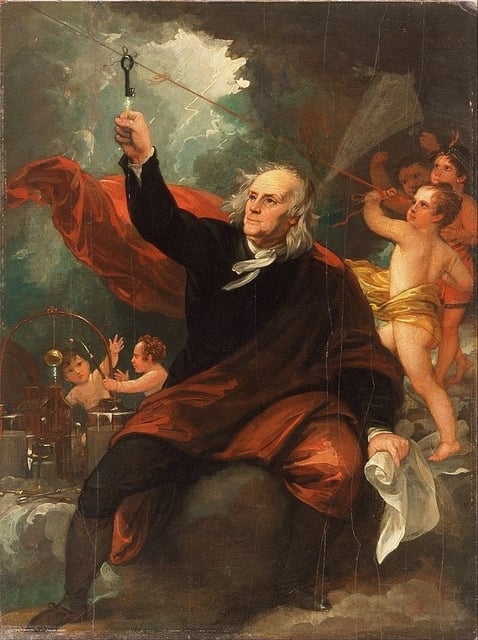 Kevin Duong explores how leading French revolutionaries, in need of an image to represent the all important “will of the people”, turned to the thunderbolt — a natural symbol of power and illumination that also signalled the scientific ideals so key to their project.
Race and the White Elephant War of 1884
October 11, 2017
History
Kevin Duong explores how leading French revolutionaries, in need of an image to represent the all important “will of the people”, turned to the thunderbolt — a natural symbol of power and illumination that also signalled the scientific ideals so key to their project.
Race and the White Elephant War of 1884
October 11, 2017
History
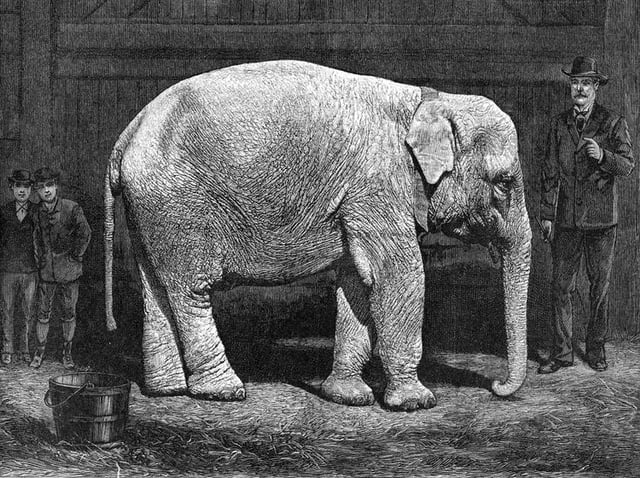 Feuding impresarios, a white-but-not-white-enough elephant, and racist ads for soap — Ross Bullen on how a bizarre episode in circus history became an unlikely forum for discussing 19th-century theories of race, and inadvertently laid bare the ideological constructions at their heart.
Out From Behind This Mask
July 27, 2017
Philosophy & Art & History
Feuding impresarios, a white-but-not-white-enough elephant, and racist ads for soap — Ross Bullen on how a bizarre episode in circus history became an unlikely forum for discussing 19th-century theories of race, and inadvertently laid bare the ideological constructions at their heart.
Out From Behind This Mask
July 27, 2017
Philosophy & Art & History
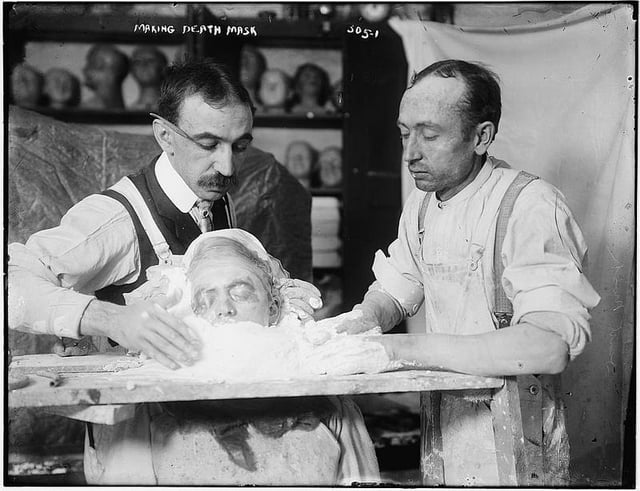 A Barthesian bristle and the curious power of Walt Whitman’s posthumous eyelids — D. Graham Burnett on meditations conjured by a visit to the death masks of the Laurence Hutton Collection.
Decoding the Morse: The History of 16th-Century Narcoleptic Walruses
June 14, 2017
History & Religion
A Barthesian bristle and the curious power of Walt Whitman’s posthumous eyelids — D. Graham Burnett on meditations conjured by a visit to the death masks of the Laurence Hutton Collection.
Decoding the Morse: The History of 16th-Century Narcoleptic Walruses
June 14, 2017
History & Religion
 Amongst the assorted curiosities described in Olaus Magnus’ 1555 tome on Nordic life was the morse — a hirsuite, fearsome walrus-like beast, that was said to snooze upon cliffs while hanging by its teeth. Natalie Lawrence explores the career of this chimerical wonder, shaped both by scholarly images of a fabulous north and the grisly corporeality of the trade in walrus skins, teeth, and bone.
Woodcuts and Witches
May 4, 2017
Books & Art & History & Religion
Amongst the assorted curiosities described in Olaus Magnus’ 1555 tome on Nordic life was the morse — a hirsuite, fearsome walrus-like beast, that was said to snooze upon cliffs while hanging by its teeth. Natalie Lawrence explores the career of this chimerical wonder, shaped both by scholarly images of a fabulous north and the grisly corporeality of the trade in walrus skins, teeth, and bone.
Woodcuts and Witches
May 4, 2017
Books & Art & History & Religion
 Jon Crabb on the witch-craze of Early Modern Europe, and how the concurrent rise of the mass-produced woodcut helped forge the archetype of the broom-riding crone — complete with cauldron and cats — so familiar today.
Lofty Only in Sound: Crossed Wires and Community in 19th-Century Dreams
April 5, 2017
Poems & Science & History
Jon Crabb on the witch-craze of Early Modern Europe, and how the concurrent rise of the mass-produced woodcut helped forge the archetype of the broom-riding crone — complete with cauldron and cats — so familiar today.
Lofty Only in Sound: Crossed Wires and Community in 19th-Century Dreams
April 5, 2017
Poems & Science & History
 Alicia Puglionesi explores a curious case of supposed dream telepathy at the end of the US Civil War, in which old ideas about the prophetic nature of dreaming collided with loss, longing, and new possibilities of communication at a distance.
A Queer Taste for Macaroni
February 22, 2017
Art & History
Alicia Puglionesi explores a curious case of supposed dream telepathy at the end of the US Civil War, in which old ideas about the prophetic nature of dreaming collided with loss, longing, and new possibilities of communication at a distance.
A Queer Taste for Macaroni
February 22, 2017
Art & History
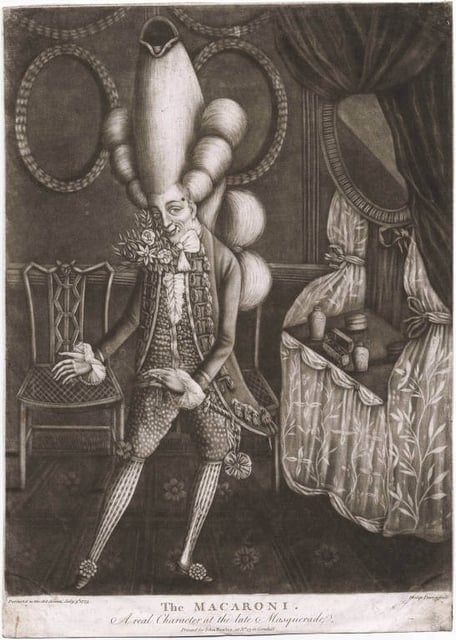 With his enormous hair, painted face, and dainty attire, the so-called “macaroni” was a common sight upon the streets and ridiculing prints of 1770s London. Dominic Janes explores how with this new figure — and the scandalous sodomy trials with which the stereotype became entwined — a widespread discussion of same-sex desire first entered the public realm, long before the days of Oscar Wilde.
George Washington: A Descendant of Odin?
February 8, 2017
Books & History & Religion
With his enormous hair, painted face, and dainty attire, the so-called “macaroni” was a common sight upon the streets and ridiculing prints of 1770s London. Dominic Janes explores how with this new figure — and the scandalous sodomy trials with which the stereotype became entwined — a widespread discussion of same-sex desire first entered the public realm, long before the days of Oscar Wilde.
George Washington: A Descendant of Odin?
February 8, 2017
Books & History & Religion
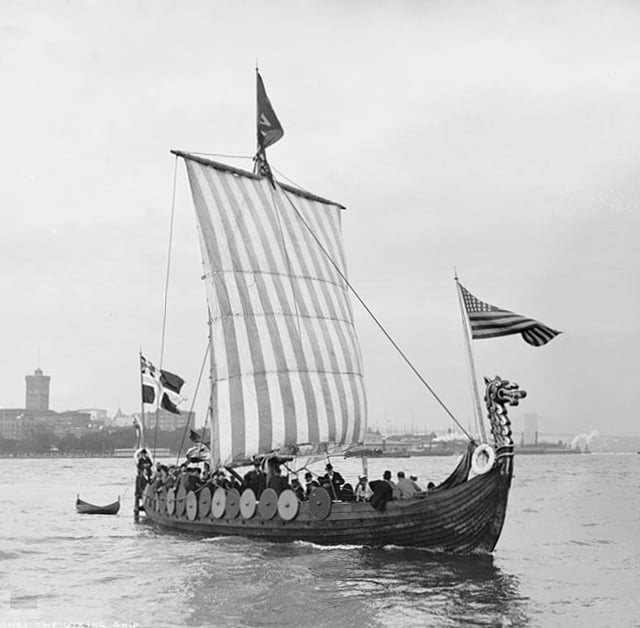 Yvonne Seale on a bizarre and fanciful piece of genealogical scholarship and what it tells us about identity in late 19th-century America.
“Let us Calculate!”: Leibniz, Llull, and the Computational Imagination
November 10, 2016
Science & Philosophy & History
Yvonne Seale on a bizarre and fanciful piece of genealogical scholarship and what it tells us about identity in late 19th-century America.
“Let us Calculate!”: Leibniz, Llull, and the Computational Imagination
November 10, 2016
Science & Philosophy & History
 Three hundred years after the death of Gottfried Wilhelm Leibniz and seven hundred years after the death of Ramon Llull, Jonathan Gray looks at how their early visions of computation and the “combinatorial art” speak to our own age of data, algorithms, and artificial intelligence.
Richard Hakluyt and Early English Travel
October 26, 2016
Books & History
Three hundred years after the death of Gottfried Wilhelm Leibniz and seven hundred years after the death of Ramon Llull, Jonathan Gray looks at how their early visions of computation and the “combinatorial art” speak to our own age of data, algorithms, and artificial intelligence.
Richard Hakluyt and Early English Travel
October 26, 2016
Books & History
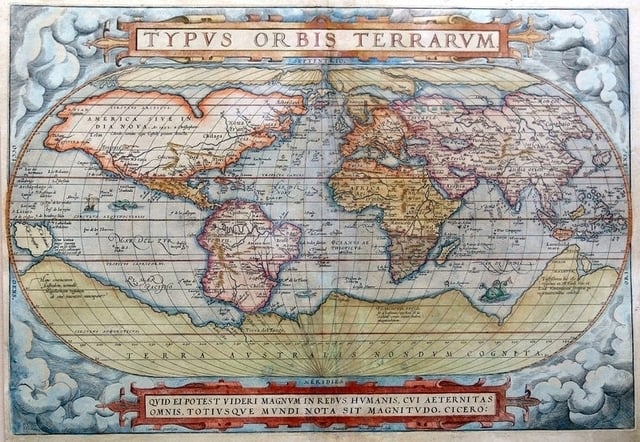 The Principle Navigations, Richard Hakluyt’s great championing of Elizabethan colonial exploration, remains one of the most important collections of English travel writing ever published. As well as the escapades of famed names such as Francis Drake and Walter Raleigh, Nandini Das looks at how the book preserves many stories of lesser known figures that surely would have been otherwise lost.
The Calcutta Pococurante Society: Public and Private in India’s Age of Reform
August 17, 2016
History
The Principle Navigations, Richard Hakluyt’s great championing of Elizabethan colonial exploration, remains one of the most important collections of English travel writing ever published. As well as the escapades of famed names such as Francis Drake and Walter Raleigh, Nandini Das looks at how the book preserves many stories of lesser known figures that surely would have been otherwise lost.
The Calcutta Pococurante Society: Public and Private in India’s Age of Reform
August 17, 2016
History
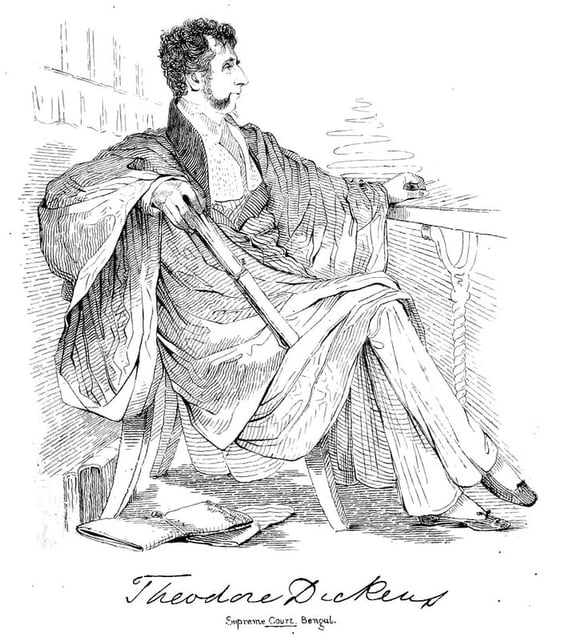 Joshua Ehrlich on an obscure text found on the shelves of a Bengali library and the light it sheds on the idea of the “public” in 19th-century Calcutta.
“Unlimiting the Bounds”: the Panorama and the Balloon View
August 3, 2016
Art & History
Joshua Ehrlich on an obscure text found on the shelves of a Bengali library and the light it sheds on the idea of the “public” in 19th-century Calcutta.
“Unlimiting the Bounds”: the Panorama and the Balloon View
August 3, 2016
Art & History
 The second essay in a two-part series in which Lily Ford explores how balloon flight transformed our ideas of landscape. Here she looks at the phenomenon of the panorama, and how its attempts at creating the immersive view were inextricably linked to the new visual experience opened up by the advent of ballooning.
“For the Sake of the Prospect”: Experiencing the World from Above in the Late 18th Century
July 20, 2016
Art & History
The second essay in a two-part series in which Lily Ford explores how balloon flight transformed our ideas of landscape. Here she looks at the phenomenon of the panorama, and how its attempts at creating the immersive view were inextricably linked to the new visual experience opened up by the advent of ballooning.
“For the Sake of the Prospect”: Experiencing the World from Above in the Late 18th Century
July 20, 2016
Art & History
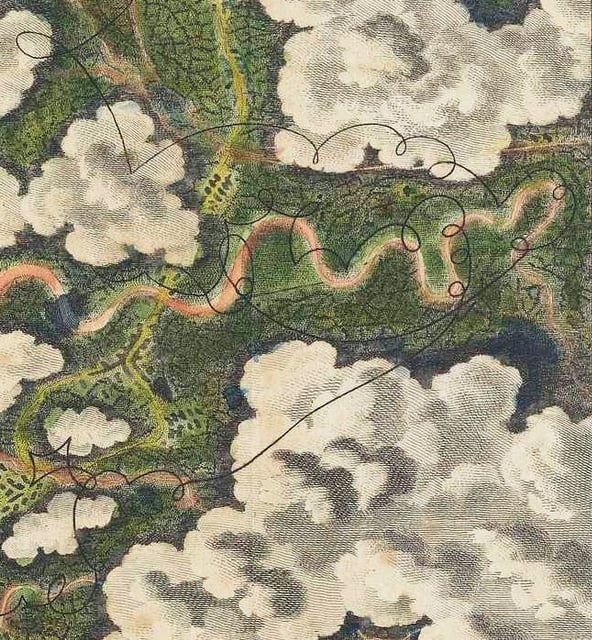 The first essay in a two-part series in which Lily Ford explores how balloon flight transformed our ideas of landscape. We begin with a look at the unique set of images included in Thomas Baldwin’s Airopaidia (1786) — the first “real” overhead aerial views.
The Secret History of Holywell Street: Home to Victorian London’s Dirty Book Trade
June 29, 2016
Photography & Literature & Art & History
The first essay in a two-part series in which Lily Ford explores how balloon flight transformed our ideas of landscape. We begin with a look at the unique set of images included in Thomas Baldwin’s Airopaidia (1786) — the first “real” overhead aerial views.
The Secret History of Holywell Street: Home to Victorian London’s Dirty Book Trade
June 29, 2016
Photography & Literature & Art & History
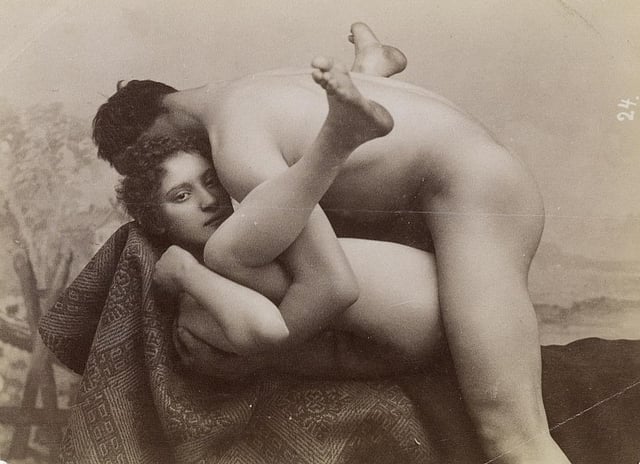 Victorian sexuality is often considered synonymous with prudishness, conjuring images of covered-up piano legs and dark ankle-length skirts. Historian Matthew Green uncovers a quite different scene in the sordid story of Holywell St, 19th-century London’s epicentre of erotica and smut.
Frankenstein, the Baroness, and the Climate Refugees of 1816
June 15, 2016
Literature & History
Victorian sexuality is often considered synonymous with prudishness, conjuring images of covered-up piano legs and dark ankle-length skirts. Historian Matthew Green uncovers a quite different scene in the sordid story of Holywell St, 19th-century London’s epicentre of erotica and smut.
Frankenstein, the Baroness, and the Climate Refugees of 1816
June 15, 2016
Literature & History
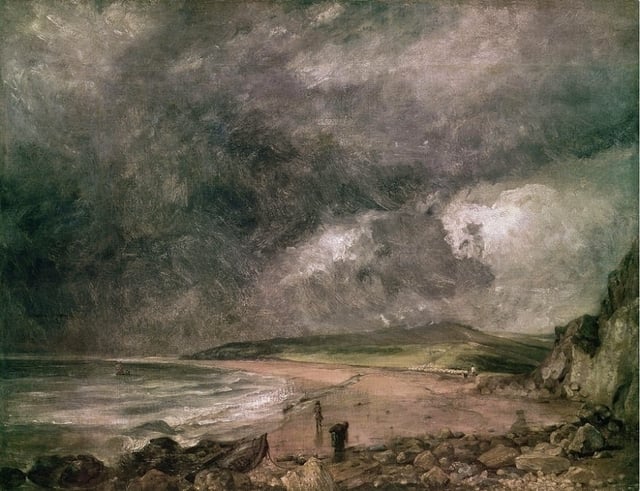 It is two hundred years since “The Year Without a Summer”, when a sun-obscuring ash cloud — ejected from one of the most powerful volcanic eruptions in recorded history — caused temperatures to plummet the world over. Gillen D’Arcy Wood looks at the humanitarian crisis triggered by the unusual weather, and how it offers an alternative lens through which to read Mary Shelley’s Frankenstein, a book begun in its midst.
George Washington at the Siamese Court
April 21, 2016
History
It is two hundred years since “The Year Without a Summer”, when a sun-obscuring ash cloud — ejected from one of the most powerful volcanic eruptions in recorded history — caused temperatures to plummet the world over. Gillen D’Arcy Wood looks at the humanitarian crisis triggered by the unusual weather, and how it offers an alternative lens through which to read Mary Shelley’s Frankenstein, a book begun in its midst.
George Washington at the Siamese Court
April 21, 2016
History
 Keen to appear outward-looking and open to Western culture, in 1838 the Second King of Siam bestowed upon his son a most unusual name. Ross Bullen explores the curious case of “Prince George Washington”, a 19th-century Siamese prince.
Cat Pianos, Sound-Houses, and Other Imaginary Musical Instruments
July 15, 2015
Music & Science & History
Keen to appear outward-looking and open to Western culture, in 1838 the Second King of Siam bestowed upon his son a most unusual name. Ross Bullen explores the curious case of “Prince George Washington”, a 19th-century Siamese prince.
Cat Pianos, Sound-Houses, and Other Imaginary Musical Instruments
July 15, 2015
Music & Science & History
 Deirdre Loughridge and Thomas Patteson, curators of the Museum of Imaginary Musical Instruments, explore the wonderful history of made-up musical contraptions, including a piano comprised of yelping cats and Francis Bacon’s 17th-century vision of experimental sound manipulation.
Forgotten Failures of African Exploration
April 22, 2015
History
Deirdre Loughridge and Thomas Patteson, curators of the Museum of Imaginary Musical Instruments, explore the wonderful history of made-up musical contraptions, including a piano comprised of yelping cats and Francis Bacon’s 17th-century vision of experimental sound manipulation.
Forgotten Failures of African Exploration
April 22, 2015
History
 Dane Kennedy reflects on two disastrous expeditions into Africa organised by the British in the early-19th century, and how their lofty ambitions crumbled before the implacable realities of the continent.
When Chocolate was Medicine: Colmenero, Wadsworth, and Dufour
January 28, 2015
Science & History
Chocolate has not always been the common confectionary we experience today. When it first arrived from the Americas into Europe in the 17th century it was a rare and mysterious substance, thought more of as a drug than as a food. Christine Jones traces the history and literature of its reception.
Julia Pastrana: A “Monster to the Whole World”
November 26, 2014
Science & History
Dane Kennedy reflects on two disastrous expeditions into Africa organised by the British in the early-19th century, and how their lofty ambitions crumbled before the implacable realities of the continent.
When Chocolate was Medicine: Colmenero, Wadsworth, and Dufour
January 28, 2015
Science & History
Chocolate has not always been the common confectionary we experience today. When it first arrived from the Americas into Europe in the 17th century it was a rare and mysterious substance, thought more of as a drug than as a food. Christine Jones traces the history and literature of its reception.
Julia Pastrana: A “Monster to the Whole World”
November 26, 2014
Science & History
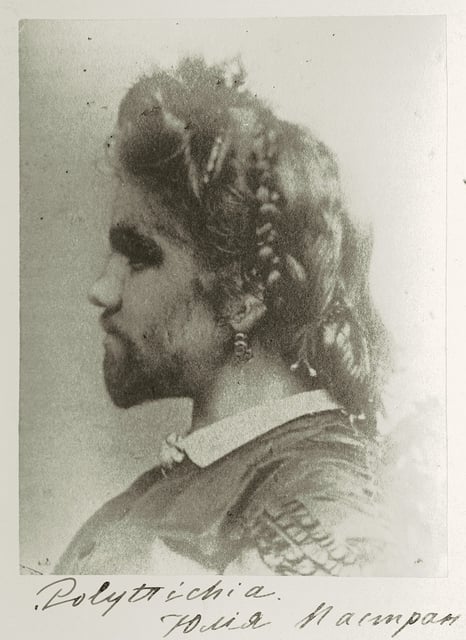 Julia Pastrana, a woman from Mexico born with hypertrichosis, became one of the most famous human curiosities of the 19th century, exhibited the world over as a “bearded lady” while both alive and dead. Bess Lovejoy explores her story and how it was only in 2013, 153 years after her passing, that she was finally laid to rest.
Illustrations of Madness: James Tilly Matthews and the Air Loom
November 12, 2014
Science & Art & History
Mike Jay recounts the tragic story of James Tilly Matthews, a former peace activist of the Napoleonic Wars who was confined to London’s notorious Bedlam asylum in 1797 for believing that his mind was under the control of the “Air Loom” – a terrifying machine whose mesmeric rays and mysterious gases were brainwashing politicians and plunging Europe into revolution, terror, and war.
Piracy at the Old Bailey
October 1, 2014
History
Julia Pastrana, a woman from Mexico born with hypertrichosis, became one of the most famous human curiosities of the 19th century, exhibited the world over as a “bearded lady” while both alive and dead. Bess Lovejoy explores her story and how it was only in 2013, 153 years after her passing, that she was finally laid to rest.
Illustrations of Madness: James Tilly Matthews and the Air Loom
November 12, 2014
Science & Art & History
Mike Jay recounts the tragic story of James Tilly Matthews, a former peace activist of the Napoleonic Wars who was confined to London’s notorious Bedlam asylum in 1797 for believing that his mind was under the control of the “Air Loom” – a terrifying machine whose mesmeric rays and mysterious gases were brainwashing politicians and plunging Europe into revolution, terror, and war.
Piracy at the Old Bailey
October 1, 2014
History
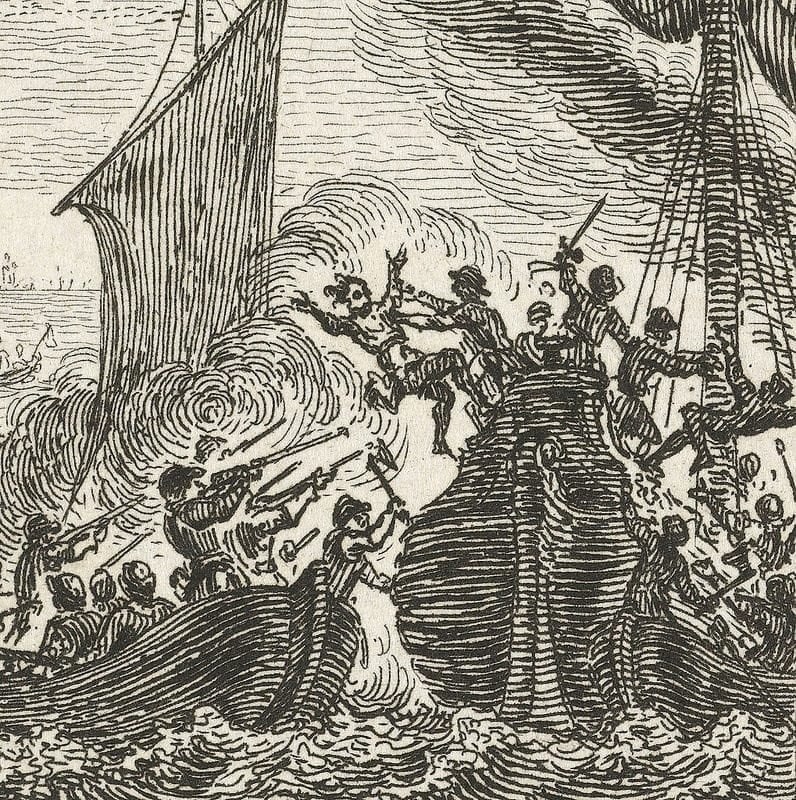 Ben Merriman presents a selection of piracy cases from the proceedings of London’s Old Bailey. Although a few live up to the swashbuckling heists of stereotype, many reveal the surprisingly everyday nature of the maritime crimes brought before the court, including cases involving an argument over chickens and the stealing of a captain’s hats.
Picturing Pyrotechnics
June 25, 2014
Art & History
Ben Merriman presents a selection of piracy cases from the proceedings of London’s Old Bailey. Although a few live up to the swashbuckling heists of stereotype, many reveal the surprisingly everyday nature of the maritime crimes brought before the court, including cases involving an argument over chickens and the stealing of a captain’s hats.
Picturing Pyrotechnics
June 25, 2014
Art & History
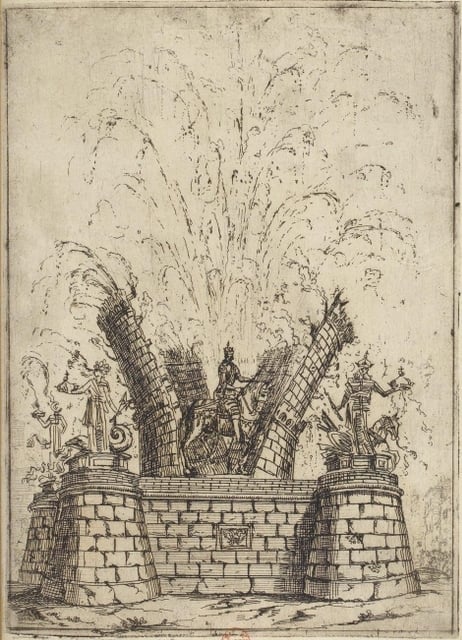 Simon Werrett explores how artists through the ages have responded to the challenge of representing firework displays, from the highly politicised and allegorical renderings of the early modern period to Whistler’s impressionistic Nocturne in Black and Gold.
John L. Sullivan Fights America
April 30, 2014
History & Events
Simon Werrett explores how artists through the ages have responded to the challenge of representing firework displays, from the highly politicised and allegorical renderings of the early modern period to Whistler’s impressionistic Nocturne in Black and Gold.
John L. Sullivan Fights America
April 30, 2014
History & Events
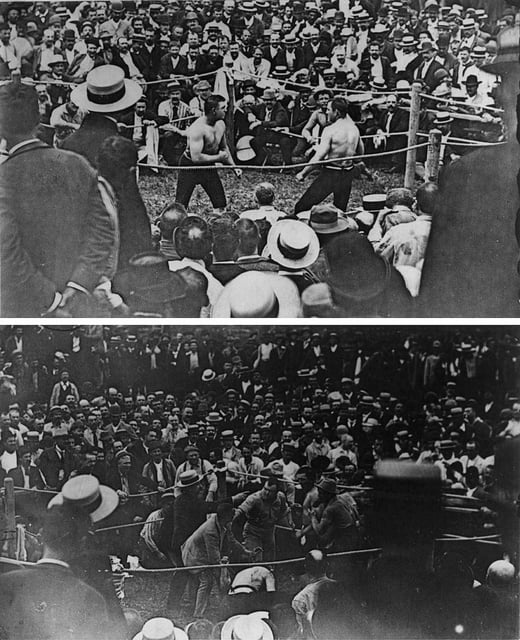 In 1883, the Irish-American heavy-weight boxing champion John L. Sullivan embarked on an unprecedented coast-to-coast tour of the United States offering a prize to any person who could endure four rounds with him in the ring. Christopher Klein tells of this remarkable journey and how the railroads and the rise of the popular press proved instrumental in forging Sullivan into America’s first sports superstar.
1592: Coining Columbus
April 16, 2014
Books & Art & History
In 1883, the Irish-American heavy-weight boxing champion John L. Sullivan embarked on an unprecedented coast-to-coast tour of the United States offering a prize to any person who could endure four rounds with him in the ring. Christopher Klein tells of this remarkable journey and how the railroads and the rise of the popular press proved instrumental in forging Sullivan into America’s first sports superstar.
1592: Coining Columbus
April 16, 2014
Books & Art & History
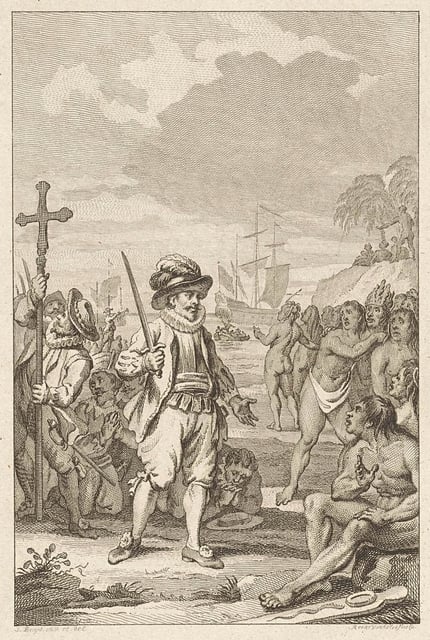 For many, the arrival of Christopher Columbus in the Americas is inextricably linked to a particular image: a small group of confident men on a tropical beach formally announcing their presence to the dumbfounded Amerindians. Michiel van Groesen explores the origins of this Eurocentric iconography and ascribes its persistence to the editorial strategy of the publisher who invented the initial design, a full century after Columbus’ encounter.
Darkness Over All: John Robison and the Birth of the Illuminati Conspiracy
April 2, 2014
History & Religion
For many, the arrival of Christopher Columbus in the Americas is inextricably linked to a particular image: a small group of confident men on a tropical beach formally announcing their presence to the dumbfounded Amerindians. Michiel van Groesen explores the origins of this Eurocentric iconography and ascribes its persistence to the editorial strategy of the publisher who invented the initial design, a full century after Columbus’ encounter.
Darkness Over All: John Robison and the Birth of the Illuminati Conspiracy
April 2, 2014
History & Religion
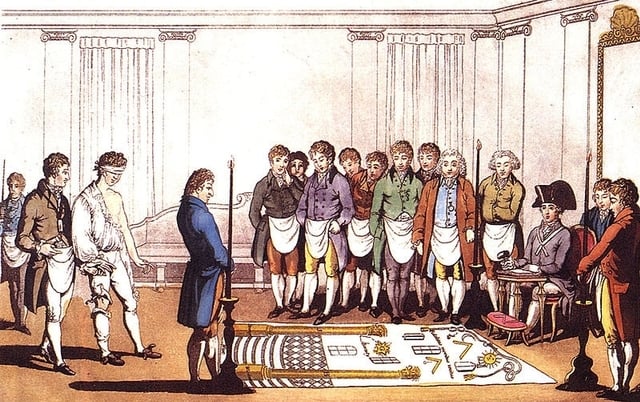 Conspiracy theories of a secretive power elite seeking global domination have long held a place in the modern imagination. Mike Jay explores the idea’s beginnings in the writings of John Robison, a Scottish scientist who maintained that the French revolution was the work of a covert Masonic cell known as the Illuminati.
Writing his Life through the Other: The Anthropology of Malinowski
January 22, 2014
Science & History
Last year saw the works of Bronislaw Malinowski – father of modern anthropology – enter the public domain in many countries around the world. Michael W. Young explores the personal crisis plaguing the Polish-born anthropologist at the end of his first major stint of ethnographic immersion in the Trobriand Islands, a period of self-doubt glimpsed through entries in his diary – the most infamous, most nakedly honest document in the annals of social anthropology.
Inside the Empty House: Sherlock Holmes, For King and Country
January 8, 2014
Literature & History
Conspiracy theories of a secretive power elite seeking global domination have long held a place in the modern imagination. Mike Jay explores the idea’s beginnings in the writings of John Robison, a Scottish scientist who maintained that the French revolution was the work of a covert Masonic cell known as the Illuminati.
Writing his Life through the Other: The Anthropology of Malinowski
January 22, 2014
Science & History
Last year saw the works of Bronislaw Malinowski – father of modern anthropology – enter the public domain in many countries around the world. Michael W. Young explores the personal crisis plaguing the Polish-born anthropologist at the end of his first major stint of ethnographic immersion in the Trobriand Islands, a period of self-doubt glimpsed through entries in his diary – the most infamous, most nakedly honest document in the annals of social anthropology.
Inside the Empty House: Sherlock Holmes, For King and Country
January 8, 2014
Literature & History
 As a new series of BBC’s Sherlock revives the great detective after his apparent death, Andrew Glazzard investigates the domestic and imperial subterfuge beneath the surface of Sherlock Holmes’s 1903 return to Baker Street in Conan Doyle’s ‘The Empty House’.
Encounter at the Crossroads of Europe — the Fellowship of Zweig and Verhaeren
December 11, 2013
Books & Literature & History
Stefan Zweig, whose works passed into the public domain this year in many countries around the world, was one of the most famous writers of the 1920s and 30s. Will Stone explores the importance of the Austrian’s early friendship with the oft overlooked Belgian poet Emile Verhaeren.
Elizabeth Bisland’s Race Around the World
October 16, 2013
Books & Literature & History & Events
As a new series of BBC’s Sherlock revives the great detective after his apparent death, Andrew Glazzard investigates the domestic and imperial subterfuge beneath the surface of Sherlock Holmes’s 1903 return to Baker Street in Conan Doyle’s ‘The Empty House’.
Encounter at the Crossroads of Europe — the Fellowship of Zweig and Verhaeren
December 11, 2013
Books & Literature & History
Stefan Zweig, whose works passed into the public domain this year in many countries around the world, was one of the most famous writers of the 1920s and 30s. Will Stone explores the importance of the Austrian’s early friendship with the oft overlooked Belgian poet Emile Verhaeren.
Elizabeth Bisland’s Race Around the World
October 16, 2013
Books & Literature & History & Events
 Matthew Goodman explores the life and writings of Elizabeth Bisland, an American journalist propelled into the limelight when she set out in 1889 – head-to-head with fellow journalist Nellie Bly – on a journey to beat Phileas Fogg’s fictitious 80-day circumnavigation of the globe.
A Dangerous Man in the Pantheon
October 2, 2013
Literature & Philosophy & History
This October marks 300 years since the birth of French Enlightenment thinker Denis Diderot. Although perhaps best known for co-founding the Encylopédie, Philipp Blom argues for the importance of Diderot’s philosophical writings and how they offer a pertinent alternative to the Enlightenment cult of reason spearheaded by his better remembered contemporaries Voltaire and Rousseau.
The Lost World of the London Coffeehouse
August 7, 2013
Books & History
In contrast to today’s rather mundane spawn of coffeehouse chains, the London of the 17th and 18th century was home to an eclectic and thriving coffee drinking scene. Dr Matthew Green explores the halcyon days of the London coffeehouse, a haven for caffeine-fueled debate and innovation which helped to shape the modern world.
Re-examining ‘the Elephant Man’
July 24, 2013
Science & History
Nadja Durbach questions the extent to which Joseph Merrick, known as the Elephant Man, was exploited during his time in a Victorian ‘freakshow’, and asks if it wasn’t perhaps the medical establishment, often seen as his saviour, who really took advantage of Merrick and his condition.
Sir Arthur and the Fairies
June 12, 2013
Books & Photography & History & Religion & Events
Matthew Goodman explores the life and writings of Elizabeth Bisland, an American journalist propelled into the limelight when she set out in 1889 – head-to-head with fellow journalist Nellie Bly – on a journey to beat Phileas Fogg’s fictitious 80-day circumnavigation of the globe.
A Dangerous Man in the Pantheon
October 2, 2013
Literature & Philosophy & History
This October marks 300 years since the birth of French Enlightenment thinker Denis Diderot. Although perhaps best known for co-founding the Encylopédie, Philipp Blom argues for the importance of Diderot’s philosophical writings and how they offer a pertinent alternative to the Enlightenment cult of reason spearheaded by his better remembered contemporaries Voltaire and Rousseau.
The Lost World of the London Coffeehouse
August 7, 2013
Books & History
In contrast to today’s rather mundane spawn of coffeehouse chains, the London of the 17th and 18th century was home to an eclectic and thriving coffee drinking scene. Dr Matthew Green explores the halcyon days of the London coffeehouse, a haven for caffeine-fueled debate and innovation which helped to shape the modern world.
Re-examining ‘the Elephant Man’
July 24, 2013
Science & History
Nadja Durbach questions the extent to which Joseph Merrick, known as the Elephant Man, was exploited during his time in a Victorian ‘freakshow’, and asks if it wasn’t perhaps the medical establishment, often seen as his saviour, who really took advantage of Merrick and his condition.
Sir Arthur and the Fairies
June 12, 2013
Books & Photography & History & Religion & Events
 In the spring of 1920, at the beginning of a growing fascination with spiritualism brought on by the death of his son and brother in WWI, Arthur Conan Doyle took up the case of the Cottingley Fairies. Mary Losure explores how the creator of Sherlock Holmes became convinced that the ‘fairy photographs’ taken by two girls from Yorkshire were real.
Athanasius Kircher and the Hieroglyphic Sphinx
May 16, 2013
Books & Art & History & Religion
More than 170 years before Jean-François Champollion had the first real success in translating Egyptian hieroglyphs, the 17th century Jesuit scholar Athanasius Kircher was convinced he had cracked it. He was very wrong. Daniel Stolzenberg looks at Kircher’s Egyptian Oedipus, a book that has been called “one of the most learned monstrosities of all times.”
Vesalius and the Body Metaphor
April 18, 2013
Books & Science & History
In the spring of 1920, at the beginning of a growing fascination with spiritualism brought on by the death of his son and brother in WWI, Arthur Conan Doyle took up the case of the Cottingley Fairies. Mary Losure explores how the creator of Sherlock Holmes became convinced that the ‘fairy photographs’ taken by two girls from Yorkshire were real.
Athanasius Kircher and the Hieroglyphic Sphinx
May 16, 2013
Books & Art & History & Religion
More than 170 years before Jean-François Champollion had the first real success in translating Egyptian hieroglyphs, the 17th century Jesuit scholar Athanasius Kircher was convinced he had cracked it. He was very wrong. Daniel Stolzenberg looks at Kircher’s Egyptian Oedipus, a book that has been called “one of the most learned monstrosities of all times.”
Vesalius and the Body Metaphor
April 18, 2013
Books & Science & History
 City streets, a winepress, pulleys, spinning tops, a ray fish, curdled milk: just a few of the many images used by 16th century anatomist Andreas Vesalius to explain the workings of the human body in his seminal work De Humani Corporis Fabrica. Marri Lynn explores.
Joseph Banks: Portraits of a Placid Elephant
April 4, 2013
Painting & Science & Art & History
Patricia Fara traces the changing iconography of Joseph Banks, the English botanist who travelled on Captain Cook’s first great voyage and went on to become President of the Royal Society and important patron for a whole host of significant developments in the natural sciences.
Mary Toft and Her Extraordinary Delivery of Rabbits
March 20, 2013
Science & History & Events
In late 1726 much of Britain was caught up in the curious case of Mary Toft, a woman from Surrey who claimed that she had given birth to a litter of rabbits. Niki Russell tells of the events of an elaborate 18th century hoax which had King George I’s own court physicians fooled.
Still Booking on De Quincey’s Mail-Coach
February 20, 2013
Literature & History
Robin Jarvis looks at Thomas de Quincey’s essay “The English Mail-Coach, or the Glory of Motion” and how its meditation on technology and society is just as relevant today as when first published in 1849.
The Curious World of Isaac D’Israeli
February 6, 2013
Books & Literature & History
Marvin Spevack introduces the Curiosities of Literature, the epic cornucopia of essays on all things literary by Isaac D’Israeli: a scholar, man of letters and father of British Prime Minister Benjamin Disraeli.
The Forgotten Tales of the Brothers Grimm
December 20, 2012
Books & Literature & History
To mark the 200th year since the Brothers Grimm first published their Kinder-und Hausmärchen, Jack Zipes explores the importance of this neglected first edition and what it tells us about the motives and passions of the two folklorist brothers.
Henry Morton Stanley and the Pygmies of “Darkest Africa”
November 29, 2012
Books & History
After returning from his disastrous mission to central Africa to rescue a German colonial governor, the explorer Henry Morton Stanley was eager to distract from accusations of brutality with his ‘discovery’ of African pygmies. Brian Murray explores how after Stanley’s trip the African pygmy, in the form of stereotype and allegory, made its way into late Victorian society.
Athanasius, Underground
November 1, 2012
Books & Science & Art & History
City streets, a winepress, pulleys, spinning tops, a ray fish, curdled milk: just a few of the many images used by 16th century anatomist Andreas Vesalius to explain the workings of the human body in his seminal work De Humani Corporis Fabrica. Marri Lynn explores.
Joseph Banks: Portraits of a Placid Elephant
April 4, 2013
Painting & Science & Art & History
Patricia Fara traces the changing iconography of Joseph Banks, the English botanist who travelled on Captain Cook’s first great voyage and went on to become President of the Royal Society and important patron for a whole host of significant developments in the natural sciences.
Mary Toft and Her Extraordinary Delivery of Rabbits
March 20, 2013
Science & History & Events
In late 1726 much of Britain was caught up in the curious case of Mary Toft, a woman from Surrey who claimed that she had given birth to a litter of rabbits. Niki Russell tells of the events of an elaborate 18th century hoax which had King George I’s own court physicians fooled.
Still Booking on De Quincey’s Mail-Coach
February 20, 2013
Literature & History
Robin Jarvis looks at Thomas de Quincey’s essay “The English Mail-Coach, or the Glory of Motion” and how its meditation on technology and society is just as relevant today as when first published in 1849.
The Curious World of Isaac D’Israeli
February 6, 2013
Books & Literature & History
Marvin Spevack introduces the Curiosities of Literature, the epic cornucopia of essays on all things literary by Isaac D’Israeli: a scholar, man of letters and father of British Prime Minister Benjamin Disraeli.
The Forgotten Tales of the Brothers Grimm
December 20, 2012
Books & Literature & History
To mark the 200th year since the Brothers Grimm first published their Kinder-und Hausmärchen, Jack Zipes explores the importance of this neglected first edition and what it tells us about the motives and passions of the two folklorist brothers.
Henry Morton Stanley and the Pygmies of “Darkest Africa”
November 29, 2012
Books & History
After returning from his disastrous mission to central Africa to rescue a German colonial governor, the explorer Henry Morton Stanley was eager to distract from accusations of brutality with his ‘discovery’ of African pygmies. Brian Murray explores how after Stanley’s trip the African pygmy, in the form of stereotype and allegory, made its way into late Victorian society.
Athanasius, Underground
November 1, 2012
Books & Science & Art & History
 With his enormous range of scholarly pursuits the 17th-century polymath Athanasius Kircher has been hailed as the last Renaissance man and “the master of hundred arts”. John Glassie looks at one of Kircher’s great masterworks Mundus Subterraneus and how it was inspired by a subterranean adventure Kircher himself made into the bowl of Vesuvius.
Trüth, Beaüty, and Volapük
October 17, 2012
Books & Philosophy & History
With his enormous range of scholarly pursuits the 17th-century polymath Athanasius Kircher has been hailed as the last Renaissance man and “the master of hundred arts”. John Glassie looks at one of Kircher’s great masterworks Mundus Subterraneus and how it was inspired by a subterranean adventure Kircher himself made into the bowl of Vesuvius.
Trüth, Beaüty, and Volapük
October 17, 2012
Books & Philosophy & History
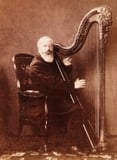 Arika Okrent explores the rise and fall of Volapük – a universal language created in the late 19th century by a German priest called Johann Schleyer.
Mrs Giacometti Prodgers, the Cabman’s Nemesis
September 19, 2012
History
Heather Tweed explores the story of the woman whose obsessive penchant for the lawsuit struck fear into the magistrates and cabmen of Victorian London alike.
The Lancashire Witches 1612-2012
August 22, 2012
Books & History
Not long after ten Lancashire residents were found guilty of witchcraft and hanged in August 1612, the official proceedings of the trial were published by the clerk of the court Thomas Potts in his The Wonderfull Discoverie of Witches in the Countie of Lancaster. Four hundred years on, Robert Poole reflects on England’s biggest witch trial and how it still has relevance today.
Conan Doyle’s Olympic Crusade
August 9, 2012
Literature & History & Events
Arika Okrent explores the rise and fall of Volapük – a universal language created in the late 19th century by a German priest called Johann Schleyer.
Mrs Giacometti Prodgers, the Cabman’s Nemesis
September 19, 2012
History
Heather Tweed explores the story of the woman whose obsessive penchant for the lawsuit struck fear into the magistrates and cabmen of Victorian London alike.
The Lancashire Witches 1612-2012
August 22, 2012
Books & History
Not long after ten Lancashire residents were found guilty of witchcraft and hanged in August 1612, the official proceedings of the trial were published by the clerk of the court Thomas Potts in his The Wonderfull Discoverie of Witches in the Countie of Lancaster. Four hundred years on, Robert Poole reflects on England’s biggest witch trial and how it still has relevance today.
Conan Doyle’s Olympic Crusade
August 9, 2012
Literature & History & Events
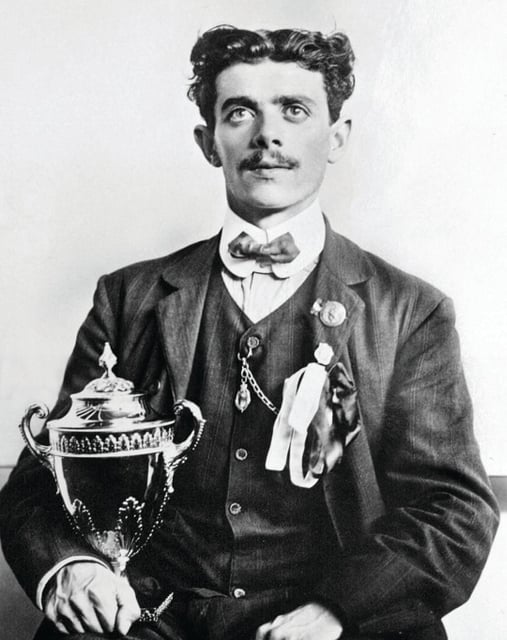 When an exhausted Dorando Pietri was helped across the finishing line in the 1908 Olympics marathon, Sir Arthur Conan Doyle, creator of Sherlock Holmes, was there to write about it for the Daily Mail. Peter Lovesey explores how the drama and excitement of this event led Conan Doyle to become intimately involved with the development of the modern Olympics as we know it.
The First Olympic Protest
July 25, 2012
History & Events
When an exhausted Dorando Pietri was helped across the finishing line in the 1908 Olympics marathon, Sir Arthur Conan Doyle, creator of Sherlock Holmes, was there to write about it for the Daily Mail. Peter Lovesey explores how the drama and excitement of this event led Conan Doyle to become intimately involved with the development of the modern Olympics as we know it.
The First Olympic Protest
July 25, 2012
History & Events
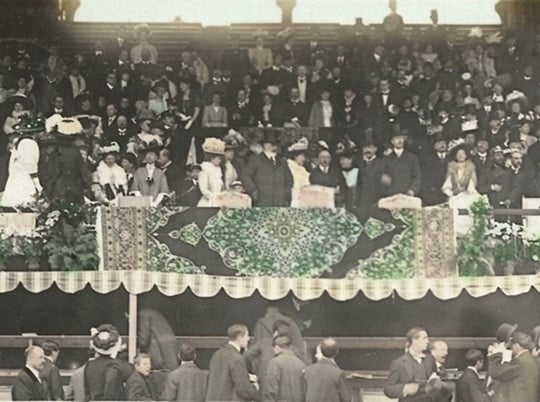 Rebecca Jenkins looks back to when London first hosted the Olympic Games and how a mix up with flags gave birth to the first Olympic protest.
John Martin and the Theatre of Subversion
July 12, 2012
Painting & Art & History
Max Adams, author of The Prometheans, looks at the art of John Martin and how in his epic landscapes of apocalyptic scale one can see reflected his revolutionary leanings.
The Polyglot of Bologna
June 26, 2012
Books & History
Rebecca Jenkins looks back to when London first hosted the Olympic Games and how a mix up with flags gave birth to the first Olympic protest.
John Martin and the Theatre of Subversion
July 12, 2012
Painting & Art & History
Max Adams, author of The Prometheans, looks at the art of John Martin and how in his epic landscapes of apocalyptic scale one can see reflected his revolutionary leanings.
The Polyglot of Bologna
June 26, 2012
Books & History
 Michael Erard takes a look at The Life of Cardinal Mezzofanti, a book exploring the extraordinary talent of the 19th century Italian cardinal who was reported to be able to speak over seventy languages.
The Krakatoa Sunsets
May 28, 2012
Poems & Literature & Science & Art & History
Michael Erard takes a look at The Life of Cardinal Mezzofanti, a book exploring the extraordinary talent of the 19th century Italian cardinal who was reported to be able to speak over seventy languages.
The Krakatoa Sunsets
May 28, 2012
Poems & Literature & Science & Art & History
 When a volcano erupted on a small island in Indonesia in 1883, the evening skies of the world glowed for months with strange colours. Richard Hamblyn explores a little-known series of letters that the poet Gerard Manley Hopkins sent in to the journal Nature describing the phenomenon – letters that would constitute the majority of the small handful of writings published while he was alive.
The Assassination of the Prime Minister, Spencer Perceval
May 8, 2012
History
Only once has a British Prime Minister been assassinated. Two hundred years ago, on the 11th May 1812, John Bellingham shot dead the Rt. Hon. Spencer Perceval as he entered the House of Commons. David C. Hanrahan tells the story.
Painting the New World
April 24, 2012
Painting & Art & History
When a volcano erupted on a small island in Indonesia in 1883, the evening skies of the world glowed for months with strange colours. Richard Hamblyn explores a little-known series of letters that the poet Gerard Manley Hopkins sent in to the journal Nature describing the phenomenon – letters that would constitute the majority of the small handful of writings published while he was alive.
The Assassination of the Prime Minister, Spencer Perceval
May 8, 2012
History
Only once has a British Prime Minister been assassinated. Two hundred years ago, on the 11th May 1812, John Bellingham shot dead the Rt. Hon. Spencer Perceval as he entered the House of Commons. David C. Hanrahan tells the story.
Painting the New World
April 24, 2012
Painting & Art & History
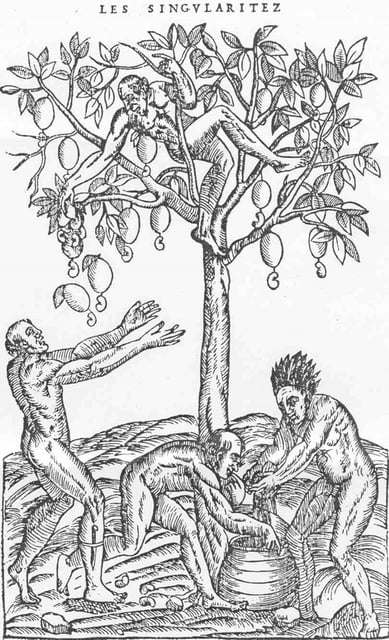 In 1585 the Englishman John White, governor of one of the very first North American colonies, made a series of exquisite watercolour sketches of the native Algonkin people alongside whom the settlers would try to live. Benjamin Breen explores the significance of the sketches and their link to the mystery of what became known as the “Lost Colony”.
The Unsinkable Myth
April 11, 2012
History
In 1585 the Englishman John White, governor of one of the very first North American colonies, made a series of exquisite watercolour sketches of the native Algonkin people alongside whom the settlers would try to live. Benjamin Breen explores the significance of the sketches and their link to the mystery of what became known as the “Lost Colony”.
The Unsinkable Myth
April 11, 2012
History
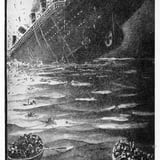 This week sees the 100th anniversary of the sinking of the RMS Titanic, one of the deadliest peacetime disasters at sea. Richard Howells, author of The Myth of the Titanic, explores the various legends surrounding the world’s most famous ship.
Remembering Scott
March 29, 2012
Photography & History
This week sees the 100th anniversary of the sinking of the RMS Titanic, one of the deadliest peacetime disasters at sea. Richard Howells, author of The Myth of the Titanic, explores the various legends surrounding the world’s most famous ship.
Remembering Scott
March 29, 2012
Photography & History
 A century on from his dramatic death on the way back from the South Pole, the memory of the explorer Captain Scott and his ill-fated Terra Nova expedition is stronger than ever. Max Jones explores the role that the iconic visual record has played in keeping the legend alive.
Lost Libraries
February 20, 2012
Books & Literature & History
A century on from his dramatic death on the way back from the South Pole, the memory of the explorer Captain Scott and his ill-fated Terra Nova expedition is stronger than ever. Max Jones explores the role that the iconic visual record has played in keeping the legend alive.
Lost Libraries
February 20, 2012
Books & Literature & History
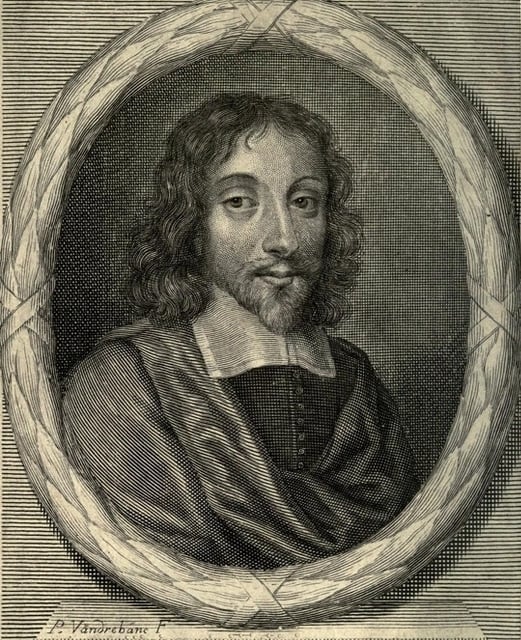 In the latter half of the 17th century the English polymath Thomas Browne wrote Musaeum Clausum, an imagined inventory of ‘remarkable books, antiquities, pictures and rarities of several kinds, scarce or never seen by any man now living’. Claire Preston explores Browne’s extraordinary catalogue amid the wider context of a Renaissance preoccupation with lost intellectual treasures.
Phillis Wheatley: an Eighteenth-Century Genius in Bondage
February 6, 2012
Poems & Literature & History
Transported as a slave from West Africa to America when just a child, Phillis Wheatley published in 1773 at the age of twenty her Poems on Various Subjects, Religious and Moral. Vincent Carretta takes a look at the remarkable life of the first ever African-American woman to be published.
An Unlikely Lunch: When Maupassant met Swinburne
January 24, 2012
Poems & Literature & History
Julian Barnes on when a young Guy de Maupassant was invited to lunch at the holiday cottage of Algernon Swinburne. A flayed human hand, pornography, the serving of monkey meat, and inordinate amounts of alcohol, all made for a truly strange Anglo-French encounter.
The Memoirs of Joseph Grimaldi
November 14, 2011
Books & History
In the latter half of the 17th century the English polymath Thomas Browne wrote Musaeum Clausum, an imagined inventory of ‘remarkable books, antiquities, pictures and rarities of several kinds, scarce or never seen by any man now living’. Claire Preston explores Browne’s extraordinary catalogue amid the wider context of a Renaissance preoccupation with lost intellectual treasures.
Phillis Wheatley: an Eighteenth-Century Genius in Bondage
February 6, 2012
Poems & Literature & History
Transported as a slave from West Africa to America when just a child, Phillis Wheatley published in 1773 at the age of twenty her Poems on Various Subjects, Religious and Moral. Vincent Carretta takes a look at the remarkable life of the first ever African-American woman to be published.
An Unlikely Lunch: When Maupassant met Swinburne
January 24, 2012
Poems & Literature & History
Julian Barnes on when a young Guy de Maupassant was invited to lunch at the holiday cottage of Algernon Swinburne. A flayed human hand, pornography, the serving of monkey meat, and inordinate amounts of alcohol, all made for a truly strange Anglo-French encounter.
The Memoirs of Joseph Grimaldi
November 14, 2011
Books & History
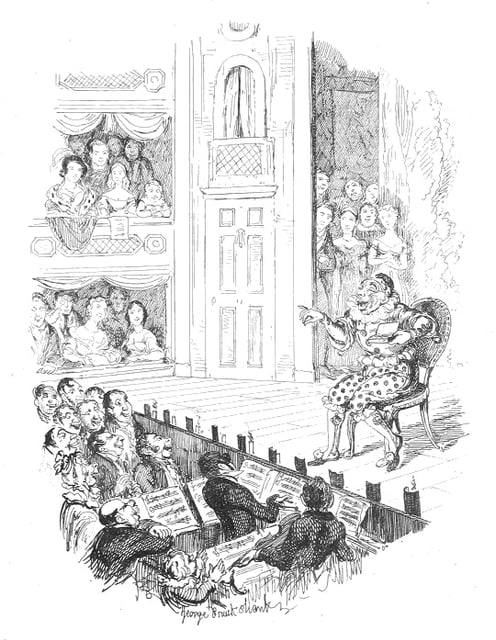 Andrew McConnell Stott, author of The Pantomime Life of Joseph Grimaldi, introduces the life and memoirs of the most famous and celebrated of English clowns.
Peter The Wild Boy
November 7, 2011
History
Andrew McConnell Stott, author of The Pantomime Life of Joseph Grimaldi, introduces the life and memoirs of the most famous and celebrated of English clowns.
Peter The Wild Boy
November 7, 2011
History
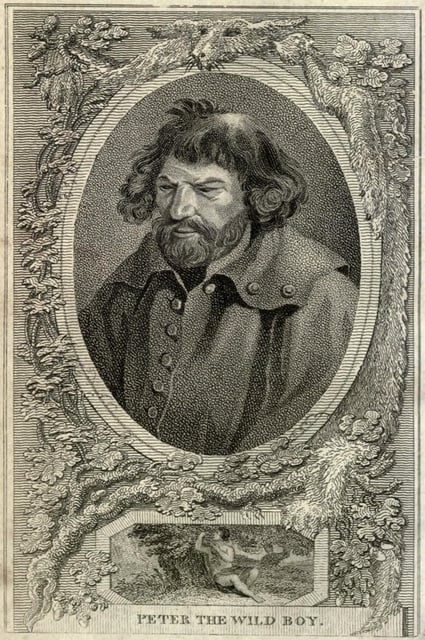 Lucy Worsley, Chief Curator at Historic Royal Palaces and author of Courtiers: The Secret History of the Georgian Court, on the strange case of the feral child found in the woods in northern Germany and brought to live in the court of George I.
On Benjamin’s Public (Oeuvre)
October 31, 2011
Literature & Philosophy & History
Lucy Worsley, Chief Curator at Historic Royal Palaces and author of Courtiers: The Secret History of the Georgian Court, on the strange case of the feral child found in the woods in northern Germany and brought to live in the court of George I.
On Benjamin’s Public (Oeuvre)
October 31, 2011
Literature & Philosophy & History
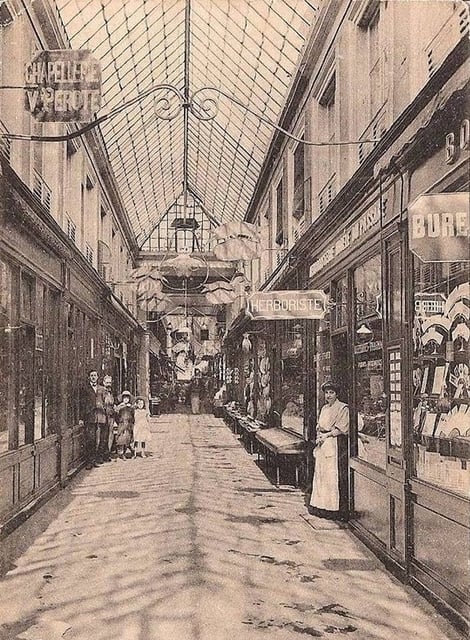 On the run from the Nazis in 1940, the philosopher, literary critic and essayist Walter Benjamin committed suicide in the Spanish border town of Portbou. In 2011, over 70 years later, his writings enter the public domain in many countries around the world. Anca Pusca, author of Walter Benjamin: The Aesthetics of Change, reflects on the relevance of Benjamin’s oeuvre in a digital age, and the implications of his work becoming freely available online.
Geronimo: The Warrior
August 29, 2011
Books & History
On the run from the Nazis in 1940, the philosopher, literary critic and essayist Walter Benjamin committed suicide in the Spanish border town of Portbou. In 2011, over 70 years later, his writings enter the public domain in many countries around the world. Anca Pusca, author of Walter Benjamin: The Aesthetics of Change, reflects on the relevance of Benjamin’s oeuvre in a digital age, and the implications of his work becoming freely available online.
Geronimo: The Warrior
August 29, 2011
Books & History
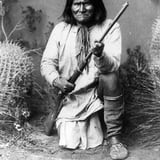 In 1906, Geronimo published his autobiography recounting the fascinating story of his life, from his years as a resistance fighter, to his capture and subsequent period of celebrity in which he appeared at the 1904 St Louis World Fair and met President Roosevelt. Edward Rielly, author of Legends of American Indian Resistance, tells of the tragic massacre which underpinned his life.
Labillardière and his Relation
August 15, 2011
Books & Art & History
In 1906, Geronimo published his autobiography recounting the fascinating story of his life, from his years as a resistance fighter, to his capture and subsequent period of celebrity in which he appeared at the 1904 St Louis World Fair and met President Roosevelt. Edward Rielly, author of Legends of American Indian Resistance, tells of the tragic massacre which underpinned his life.
Labillardière and his Relation
August 15, 2011
Books & Art & History
 When the French explorer Lapérouse went missing, a search voyage was put together to retrace his course around the islands of Australasia. On the mission was the naturalist Jacques Labillardière who published a book in 1800 of his experiences. Edward Duyker, author of Citizen Labillardière: A Naturalist’s Life in Revolution and Exploration (1755-1834), explores the impact of his pioneering work.
Was Charles Darwin an Atheist?
June 28, 2011
Science & History & Religion
When the French explorer Lapérouse went missing, a search voyage was put together to retrace his course around the islands of Australasia. On the mission was the naturalist Jacques Labillardière who published a book in 1800 of his experiences. Edward Duyker, author of Citizen Labillardière: A Naturalist’s Life in Revolution and Exploration (1755-1834), explores the impact of his pioneering work.
Was Charles Darwin an Atheist?
June 28, 2011
Science & History & Religion
 Leading Darwin expert and founder of Darwin Online, John van Wyhe, challenges the popular assumption that Darwin’s theory of evolution corresponded with a loss of religious belief.
Bugs and Beasts Before the Law
March 27, 2011
Books & History & Religion
Leading Darwin expert and founder of Darwin Online, John van Wyhe, challenges the popular assumption that Darwin’s theory of evolution corresponded with a loss of religious belief.
Bugs and Beasts Before the Law
March 27, 2011
Books & History & Religion
 Murderous pigs sent to the gallows, sparrows prosecuted for chattering in church, a gang of thieving rats let off on a wholly technical acquittal – theoretical psychologist and author Nicholas Humphrey* explores the strange world of medieval animal trials.
The Life and Work of Nehemiah Grew
March 1, 2011
Books & Science & Philosophy & Art & History
Murderous pigs sent to the gallows, sparrows prosecuted for chattering in church, a gang of thieving rats let off on a wholly technical acquittal – theoretical psychologist and author Nicholas Humphrey* explores the strange world of medieval animal trials.
The Life and Work of Nehemiah Grew
March 1, 2011
Books & Science & Philosophy & Art & History
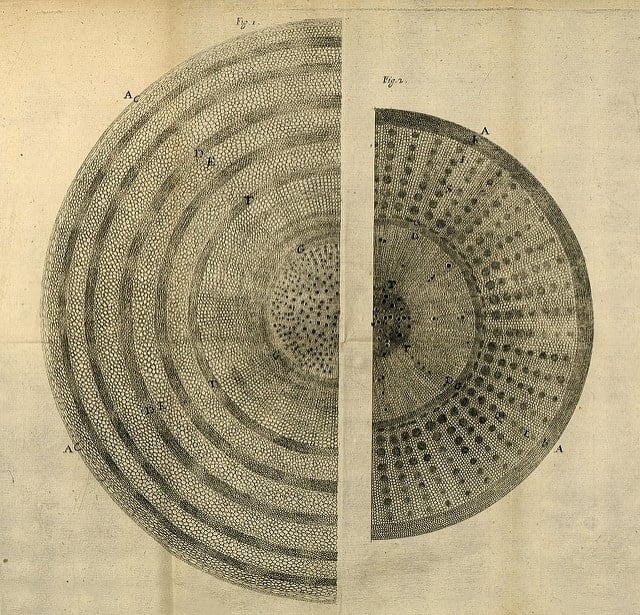 In the 82 illustrated plates included in his 1680 book The Anatomy of Plants, the English botanist Nehemiah Grew revealed for the first time the inner structure and function of plants in all their splendorous intricacy. Brian Garret explores how Grew’s pioneering “mechanist” vision in relation to the floral world paved the way for the science of plant anatomy.
Tales from Tahiti
February 8, 2011
Books & Literature & History
In the 82 illustrated plates included in his 1680 book The Anatomy of Plants, the English botanist Nehemiah Grew revealed for the first time the inner structure and function of plants in all their splendorous intricacy. Brian Garret explores how Grew’s pioneering “mechanist” vision in relation to the floral world paved the way for the science of plant anatomy.
Tales from Tahiti
February 8, 2011
Books & Literature & History
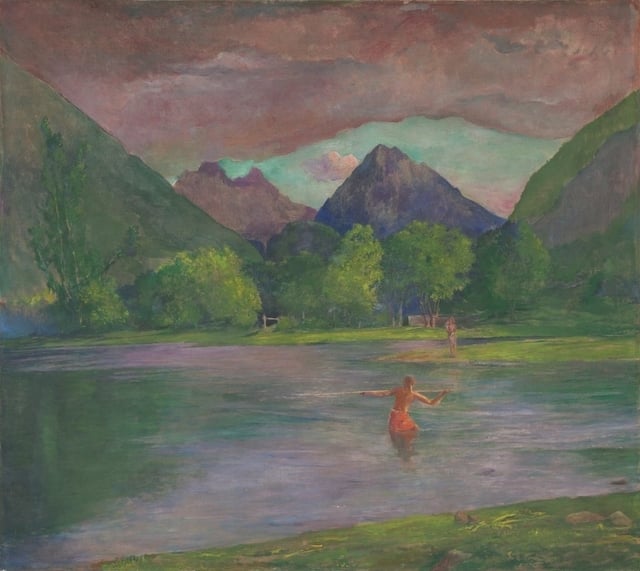 In 1890, Henry Adams – the historian, academic, journalist, and descendent of two US presidents – set out on a tour of the South Pacific. After befriending the family of “the last Queen of Tahiti,” he became inspired to write what is considered to be the first history of the island. Through Adams’ letters, Ray Davis explores the story of the book’s creation.
In 1890, Henry Adams – the historian, academic, journalist, and descendent of two US presidents – set out on a tour of the South Pacific. After befriending the family of “the last Queen of Tahiti,” he became inspired to write what is considered to be the first history of the island. Through Adams’ letters, Ray Davis explores the story of the book’s creation.
 Benjamin Breen on the remarkable story of George Psalmanazar, the mysterious Frenchman who successfully posed as a native of Formosa (now modern Taiwan) and gave birth to a meticulously fabricated culture with bizarre customs, exotic fashions, and its own invented language.
Illustrating Carnival: Remembering the Overlooked Artists Behind Early Mardi Gras
February 7, 2018
Art & History
Benjamin Breen on the remarkable story of George Psalmanazar, the mysterious Frenchman who successfully posed as a native of Formosa (now modern Taiwan) and gave birth to a meticulously fabricated culture with bizarre customs, exotic fashions, and its own invented language.
Illustrating Carnival: Remembering the Overlooked Artists Behind Early Mardi Gras
February 7, 2018
Art & History
 For more than 150 years the city of New Orleans has been known for the theatricality and extravagance of its Mardi Gras celebrations. Allison C. Meier looks at the wonderfully ornate float and costume designs from Carnival’s “Golden Age” and the group of New Orleans artists who created them.
Pods, Pots, and Potions: Putting Cacao to Paper in Early Modern Europe
December 7, 2017
Science & Art & History
For more than 150 years the city of New Orleans has been known for the theatricality and extravagance of its Mardi Gras celebrations. Allison C. Meier looks at the wonderfully ornate float and costume designs from Carnival’s “Golden Age” and the group of New Orleans artists who created them.
Pods, Pots, and Potions: Putting Cacao to Paper in Early Modern Europe
December 7, 2017
Science & Art & History
 Christine Jones explores the different ways the cacao tree has been depicted through history — from 16th-century codices to 18th-century botanicals — and what this changing iconography reveals about cacao’s journey into European culture.
Brief Encounters with Jean-Frédéric Maximilien de Waldeck
November 22, 2017
Art & History
Christine Jones explores the different ways the cacao tree has been depicted through history — from 16th-century codices to 18th-century botanicals — and what this changing iconography reveals about cacao’s journey into European culture.
Brief Encounters with Jean-Frédéric Maximilien de Waldeck
November 22, 2017
Art & History
 Not a lot concerning the artist, erotic publisher, explorer, and general enigma Count de Waldeck can be taken at face value, and this certainly includes his fanciful representations of ancient Mesoamerican culture which — despite the exquisite brilliance of their execution — run wild with anatopistic lions, elephants, and suspicious architecture. Rhys Griffiths looks at the life and work of one of the 19th century’s most mysterious and eccentric figures.
Flash Mob: Revolution, Lightning, and the People’s Will
November 9, 2017
Art & History
Not a lot concerning the artist, erotic publisher, explorer, and general enigma Count de Waldeck can be taken at face value, and this certainly includes his fanciful representations of ancient Mesoamerican culture which — despite the exquisite brilliance of their execution — run wild with anatopistic lions, elephants, and suspicious architecture. Rhys Griffiths looks at the life and work of one of the 19th century’s most mysterious and eccentric figures.
Flash Mob: Revolution, Lightning, and the People’s Will
November 9, 2017
Art & History
 Kevin Duong explores how leading French revolutionaries, in need of an image to represent the all important “will of the people”, turned to the thunderbolt — a natural symbol of power and illumination that also signalled the scientific ideals so key to their project.
Race and the White Elephant War of 1884
October 11, 2017
History
Kevin Duong explores how leading French revolutionaries, in need of an image to represent the all important “will of the people”, turned to the thunderbolt — a natural symbol of power and illumination that also signalled the scientific ideals so key to their project.
Race and the White Elephant War of 1884
October 11, 2017
History
 Feuding impresarios, a white-but-not-white-enough elephant, and racist ads for soap — Ross Bullen on how a bizarre episode in circus history became an unlikely forum for discussing 19th-century theories of race, and inadvertently laid bare the ideological constructions at their heart.
Out From Behind This Mask
July 27, 2017
Philosophy & Art & History
Feuding impresarios, a white-but-not-white-enough elephant, and racist ads for soap — Ross Bullen on how a bizarre episode in circus history became an unlikely forum for discussing 19th-century theories of race, and inadvertently laid bare the ideological constructions at their heart.
Out From Behind This Mask
July 27, 2017
Philosophy & Art & History
 A Barthesian bristle and the curious power of Walt Whitman’s posthumous eyelids — D. Graham Burnett on meditations conjured by a visit to the death masks of the Laurence Hutton Collection.
Decoding the Morse: The History of 16th-Century Narcoleptic Walruses
June 14, 2017
History & Religion
A Barthesian bristle and the curious power of Walt Whitman’s posthumous eyelids — D. Graham Burnett on meditations conjured by a visit to the death masks of the Laurence Hutton Collection.
Decoding the Morse: The History of 16th-Century Narcoleptic Walruses
June 14, 2017
History & Religion
 Amongst the assorted curiosities described in Olaus Magnus’ 1555 tome on Nordic life was the morse — a hirsuite, fearsome walrus-like beast, that was said to snooze upon cliffs while hanging by its teeth. Natalie Lawrence explores the career of this chimerical wonder, shaped both by scholarly images of a fabulous north and the grisly corporeality of the trade in walrus skins, teeth, and bone.
Woodcuts and Witches
May 4, 2017
Books & Art & History & Religion
Amongst the assorted curiosities described in Olaus Magnus’ 1555 tome on Nordic life was the morse — a hirsuite, fearsome walrus-like beast, that was said to snooze upon cliffs while hanging by its teeth. Natalie Lawrence explores the career of this chimerical wonder, shaped both by scholarly images of a fabulous north and the grisly corporeality of the trade in walrus skins, teeth, and bone.
Woodcuts and Witches
May 4, 2017
Books & Art & History & Religion
 Jon Crabb on the witch-craze of Early Modern Europe, and how the concurrent rise of the mass-produced woodcut helped forge the archetype of the broom-riding crone — complete with cauldron and cats — so familiar today.
Lofty Only in Sound: Crossed Wires and Community in 19th-Century Dreams
April 5, 2017
Poems & Science & History
Jon Crabb on the witch-craze of Early Modern Europe, and how the concurrent rise of the mass-produced woodcut helped forge the archetype of the broom-riding crone — complete with cauldron and cats — so familiar today.
Lofty Only in Sound: Crossed Wires and Community in 19th-Century Dreams
April 5, 2017
Poems & Science & History
 Alicia Puglionesi explores a curious case of supposed dream telepathy at the end of the US Civil War, in which old ideas about the prophetic nature of dreaming collided with loss, longing, and new possibilities of communication at a distance.
A Queer Taste for Macaroni
February 22, 2017
Art & History
Alicia Puglionesi explores a curious case of supposed dream telepathy at the end of the US Civil War, in which old ideas about the prophetic nature of dreaming collided with loss, longing, and new possibilities of communication at a distance.
A Queer Taste for Macaroni
February 22, 2017
Art & History
 With his enormous hair, painted face, and dainty attire, the so-called “macaroni” was a common sight upon the streets and ridiculing prints of 1770s London. Dominic Janes explores how with this new figure — and the scandalous sodomy trials with which the stereotype became entwined — a widespread discussion of same-sex desire first entered the public realm, long before the days of Oscar Wilde.
George Washington: A Descendant of Odin?
February 8, 2017
Books & History & Religion
With his enormous hair, painted face, and dainty attire, the so-called “macaroni” was a common sight upon the streets and ridiculing prints of 1770s London. Dominic Janes explores how with this new figure — and the scandalous sodomy trials with which the stereotype became entwined — a widespread discussion of same-sex desire first entered the public realm, long before the days of Oscar Wilde.
George Washington: A Descendant of Odin?
February 8, 2017
Books & History & Religion
 Yvonne Seale on a bizarre and fanciful piece of genealogical scholarship and what it tells us about identity in late 19th-century America.
“Let us Calculate!”: Leibniz, Llull, and the Computational Imagination
November 10, 2016
Science & Philosophy & History
Yvonne Seale on a bizarre and fanciful piece of genealogical scholarship and what it tells us about identity in late 19th-century America.
“Let us Calculate!”: Leibniz, Llull, and the Computational Imagination
November 10, 2016
Science & Philosophy & History
 Three hundred years after the death of Gottfried Wilhelm Leibniz and seven hundred years after the death of Ramon Llull, Jonathan Gray looks at how their early visions of computation and the “combinatorial art” speak to our own age of data, algorithms, and artificial intelligence.
Richard Hakluyt and Early English Travel
October 26, 2016
Books & History
Three hundred years after the death of Gottfried Wilhelm Leibniz and seven hundred years after the death of Ramon Llull, Jonathan Gray looks at how their early visions of computation and the “combinatorial art” speak to our own age of data, algorithms, and artificial intelligence.
Richard Hakluyt and Early English Travel
October 26, 2016
Books & History
 The Principle Navigations, Richard Hakluyt’s great championing of Elizabethan colonial exploration, remains one of the most important collections of English travel writing ever published. As well as the escapades of famed names such as Francis Drake and Walter Raleigh, Nandini Das looks at how the book preserves many stories of lesser known figures that surely would have been otherwise lost.
The Calcutta Pococurante Society: Public and Private in India’s Age of Reform
August 17, 2016
History
The Principle Navigations, Richard Hakluyt’s great championing of Elizabethan colonial exploration, remains one of the most important collections of English travel writing ever published. As well as the escapades of famed names such as Francis Drake and Walter Raleigh, Nandini Das looks at how the book preserves many stories of lesser known figures that surely would have been otherwise lost.
The Calcutta Pococurante Society: Public and Private in India’s Age of Reform
August 17, 2016
History
 Joshua Ehrlich on an obscure text found on the shelves of a Bengali library and the light it sheds on the idea of the “public” in 19th-century Calcutta.
“Unlimiting the Bounds”: the Panorama and the Balloon View
August 3, 2016
Art & History
Joshua Ehrlich on an obscure text found on the shelves of a Bengali library and the light it sheds on the idea of the “public” in 19th-century Calcutta.
“Unlimiting the Bounds”: the Panorama and the Balloon View
August 3, 2016
Art & History
 The second essay in a two-part series in which Lily Ford explores how balloon flight transformed our ideas of landscape. Here she looks at the phenomenon of the panorama, and how its attempts at creating the immersive view were inextricably linked to the new visual experience opened up by the advent of ballooning.
“For the Sake of the Prospect”: Experiencing the World from Above in the Late 18th Century
July 20, 2016
Art & History
The second essay in a two-part series in which Lily Ford explores how balloon flight transformed our ideas of landscape. Here she looks at the phenomenon of the panorama, and how its attempts at creating the immersive view were inextricably linked to the new visual experience opened up by the advent of ballooning.
“For the Sake of the Prospect”: Experiencing the World from Above in the Late 18th Century
July 20, 2016
Art & History
 The first essay in a two-part series in which Lily Ford explores how balloon flight transformed our ideas of landscape. We begin with a look at the unique set of images included in Thomas Baldwin’s Airopaidia (1786) — the first “real” overhead aerial views.
The Secret History of Holywell Street: Home to Victorian London’s Dirty Book Trade
June 29, 2016
Photography & Literature & Art & History
The first essay in a two-part series in which Lily Ford explores how balloon flight transformed our ideas of landscape. We begin with a look at the unique set of images included in Thomas Baldwin’s Airopaidia (1786) — the first “real” overhead aerial views.
The Secret History of Holywell Street: Home to Victorian London’s Dirty Book Trade
June 29, 2016
Photography & Literature & Art & History
 Victorian sexuality is often considered synonymous with prudishness, conjuring images of covered-up piano legs and dark ankle-length skirts. Historian Matthew Green uncovers a quite different scene in the sordid story of Holywell St, 19th-century London’s epicentre of erotica and smut.
Frankenstein, the Baroness, and the Climate Refugees of 1816
June 15, 2016
Literature & History
Victorian sexuality is often considered synonymous with prudishness, conjuring images of covered-up piano legs and dark ankle-length skirts. Historian Matthew Green uncovers a quite different scene in the sordid story of Holywell St, 19th-century London’s epicentre of erotica and smut.
Frankenstein, the Baroness, and the Climate Refugees of 1816
June 15, 2016
Literature & History
 It is two hundred years since “The Year Without a Summer”, when a sun-obscuring ash cloud — ejected from one of the most powerful volcanic eruptions in recorded history — caused temperatures to plummet the world over. Gillen D’Arcy Wood looks at the humanitarian crisis triggered by the unusual weather, and how it offers an alternative lens through which to read Mary Shelley’s Frankenstein, a book begun in its midst.
George Washington at the Siamese Court
April 21, 2016
History
It is two hundred years since “The Year Without a Summer”, when a sun-obscuring ash cloud — ejected from one of the most powerful volcanic eruptions in recorded history — caused temperatures to plummet the world over. Gillen D’Arcy Wood looks at the humanitarian crisis triggered by the unusual weather, and how it offers an alternative lens through which to read Mary Shelley’s Frankenstein, a book begun in its midst.
George Washington at the Siamese Court
April 21, 2016
History
 Keen to appear outward-looking and open to Western culture, in 1838 the Second King of Siam bestowed upon his son a most unusual name. Ross Bullen explores the curious case of “Prince George Washington”, a 19th-century Siamese prince.
Cat Pianos, Sound-Houses, and Other Imaginary Musical Instruments
July 15, 2015
Music & Science & History
Keen to appear outward-looking and open to Western culture, in 1838 the Second King of Siam bestowed upon his son a most unusual name. Ross Bullen explores the curious case of “Prince George Washington”, a 19th-century Siamese prince.
Cat Pianos, Sound-Houses, and Other Imaginary Musical Instruments
July 15, 2015
Music & Science & History
 Deirdre Loughridge and Thomas Patteson, curators of the Museum of Imaginary Musical Instruments, explore the wonderful history of made-up musical contraptions, including a piano comprised of yelping cats and Francis Bacon’s 17th-century vision of experimental sound manipulation.
Forgotten Failures of African Exploration
April 22, 2015
History
Deirdre Loughridge and Thomas Patteson, curators of the Museum of Imaginary Musical Instruments, explore the wonderful history of made-up musical contraptions, including a piano comprised of yelping cats and Francis Bacon’s 17th-century vision of experimental sound manipulation.
Forgotten Failures of African Exploration
April 22, 2015
History
 Dane Kennedy reflects on two disastrous expeditions into Africa organised by the British in the early-19th century, and how their lofty ambitions crumbled before the implacable realities of the continent.
When Chocolate was Medicine: Colmenero, Wadsworth, and Dufour
January 28, 2015
Science & History
Chocolate has not always been the common confectionary we experience today. When it first arrived from the Americas into Europe in the 17th century it was a rare and mysterious substance, thought more of as a drug than as a food. Christine Jones traces the history and literature of its reception.
Julia Pastrana: A “Monster to the Whole World”
November 26, 2014
Science & History
Dane Kennedy reflects on two disastrous expeditions into Africa organised by the British in the early-19th century, and how their lofty ambitions crumbled before the implacable realities of the continent.
When Chocolate was Medicine: Colmenero, Wadsworth, and Dufour
January 28, 2015
Science & History
Chocolate has not always been the common confectionary we experience today. When it first arrived from the Americas into Europe in the 17th century it was a rare and mysterious substance, thought more of as a drug than as a food. Christine Jones traces the history and literature of its reception.
Julia Pastrana: A “Monster to the Whole World”
November 26, 2014
Science & History
 Julia Pastrana, a woman from Mexico born with hypertrichosis, became one of the most famous human curiosities of the 19th century, exhibited the world over as a “bearded lady” while both alive and dead. Bess Lovejoy explores her story and how it was only in 2013, 153 years after her passing, that she was finally laid to rest.
Illustrations of Madness: James Tilly Matthews and the Air Loom
November 12, 2014
Science & Art & History
Mike Jay recounts the tragic story of James Tilly Matthews, a former peace activist of the Napoleonic Wars who was confined to London’s notorious Bedlam asylum in 1797 for believing that his mind was under the control of the “Air Loom” – a terrifying machine whose mesmeric rays and mysterious gases were brainwashing politicians and plunging Europe into revolution, terror, and war.
Piracy at the Old Bailey
October 1, 2014
History
Julia Pastrana, a woman from Mexico born with hypertrichosis, became one of the most famous human curiosities of the 19th century, exhibited the world over as a “bearded lady” while both alive and dead. Bess Lovejoy explores her story and how it was only in 2013, 153 years after her passing, that she was finally laid to rest.
Illustrations of Madness: James Tilly Matthews and the Air Loom
November 12, 2014
Science & Art & History
Mike Jay recounts the tragic story of James Tilly Matthews, a former peace activist of the Napoleonic Wars who was confined to London’s notorious Bedlam asylum in 1797 for believing that his mind was under the control of the “Air Loom” – a terrifying machine whose mesmeric rays and mysterious gases were brainwashing politicians and plunging Europe into revolution, terror, and war.
Piracy at the Old Bailey
October 1, 2014
History
 Ben Merriman presents a selection of piracy cases from the proceedings of London’s Old Bailey. Although a few live up to the swashbuckling heists of stereotype, many reveal the surprisingly everyday nature of the maritime crimes brought before the court, including cases involving an argument over chickens and the stealing of a captain’s hats.
Picturing Pyrotechnics
June 25, 2014
Art & History
Ben Merriman presents a selection of piracy cases from the proceedings of London’s Old Bailey. Although a few live up to the swashbuckling heists of stereotype, many reveal the surprisingly everyday nature of the maritime crimes brought before the court, including cases involving an argument over chickens and the stealing of a captain’s hats.
Picturing Pyrotechnics
June 25, 2014
Art & History
 Simon Werrett explores how artists through the ages have responded to the challenge of representing firework displays, from the highly politicised and allegorical renderings of the early modern period to Whistler’s impressionistic Nocturne in Black and Gold.
John L. Sullivan Fights America
April 30, 2014
History & Events
Simon Werrett explores how artists through the ages have responded to the challenge of representing firework displays, from the highly politicised and allegorical renderings of the early modern period to Whistler’s impressionistic Nocturne in Black and Gold.
John L. Sullivan Fights America
April 30, 2014
History & Events
 In 1883, the Irish-American heavy-weight boxing champion John L. Sullivan embarked on an unprecedented coast-to-coast tour of the United States offering a prize to any person who could endure four rounds with him in the ring. Christopher Klein tells of this remarkable journey and how the railroads and the rise of the popular press proved instrumental in forging Sullivan into America’s first sports superstar.
1592: Coining Columbus
April 16, 2014
Books & Art & History
In 1883, the Irish-American heavy-weight boxing champion John L. Sullivan embarked on an unprecedented coast-to-coast tour of the United States offering a prize to any person who could endure four rounds with him in the ring. Christopher Klein tells of this remarkable journey and how the railroads and the rise of the popular press proved instrumental in forging Sullivan into America’s first sports superstar.
1592: Coining Columbus
April 16, 2014
Books & Art & History
 For many, the arrival of Christopher Columbus in the Americas is inextricably linked to a particular image: a small group of confident men on a tropical beach formally announcing their presence to the dumbfounded Amerindians. Michiel van Groesen explores the origins of this Eurocentric iconography and ascribes its persistence to the editorial strategy of the publisher who invented the initial design, a full century after Columbus’ encounter.
Darkness Over All: John Robison and the Birth of the Illuminati Conspiracy
April 2, 2014
History & Religion
For many, the arrival of Christopher Columbus in the Americas is inextricably linked to a particular image: a small group of confident men on a tropical beach formally announcing their presence to the dumbfounded Amerindians. Michiel van Groesen explores the origins of this Eurocentric iconography and ascribes its persistence to the editorial strategy of the publisher who invented the initial design, a full century after Columbus’ encounter.
Darkness Over All: John Robison and the Birth of the Illuminati Conspiracy
April 2, 2014
History & Religion
 Conspiracy theories of a secretive power elite seeking global domination have long held a place in the modern imagination. Mike Jay explores the idea’s beginnings in the writings of John Robison, a Scottish scientist who maintained that the French revolution was the work of a covert Masonic cell known as the Illuminati.
Writing his Life through the Other: The Anthropology of Malinowski
January 22, 2014
Science & History
Last year saw the works of Bronislaw Malinowski – father of modern anthropology – enter the public domain in many countries around the world. Michael W. Young explores the personal crisis plaguing the Polish-born anthropologist at the end of his first major stint of ethnographic immersion in the Trobriand Islands, a period of self-doubt glimpsed through entries in his diary – the most infamous, most nakedly honest document in the annals of social anthropology.
Inside the Empty House: Sherlock Holmes, For King and Country
January 8, 2014
Literature & History
Conspiracy theories of a secretive power elite seeking global domination have long held a place in the modern imagination. Mike Jay explores the idea’s beginnings in the writings of John Robison, a Scottish scientist who maintained that the French revolution was the work of a covert Masonic cell known as the Illuminati.
Writing his Life through the Other: The Anthropology of Malinowski
January 22, 2014
Science & History
Last year saw the works of Bronislaw Malinowski – father of modern anthropology – enter the public domain in many countries around the world. Michael W. Young explores the personal crisis plaguing the Polish-born anthropologist at the end of his first major stint of ethnographic immersion in the Trobriand Islands, a period of self-doubt glimpsed through entries in his diary – the most infamous, most nakedly honest document in the annals of social anthropology.
Inside the Empty House: Sherlock Holmes, For King and Country
January 8, 2014
Literature & History
 As a new series of BBC’s Sherlock revives the great detective after his apparent death, Andrew Glazzard investigates the domestic and imperial subterfuge beneath the surface of Sherlock Holmes’s 1903 return to Baker Street in Conan Doyle’s ‘The Empty House’.
Encounter at the Crossroads of Europe — the Fellowship of Zweig and Verhaeren
December 11, 2013
Books & Literature & History
Stefan Zweig, whose works passed into the public domain this year in many countries around the world, was one of the most famous writers of the 1920s and 30s. Will Stone explores the importance of the Austrian’s early friendship with the oft overlooked Belgian poet Emile Verhaeren.
Elizabeth Bisland’s Race Around the World
October 16, 2013
Books & Literature & History & Events
As a new series of BBC’s Sherlock revives the great detective after his apparent death, Andrew Glazzard investigates the domestic and imperial subterfuge beneath the surface of Sherlock Holmes’s 1903 return to Baker Street in Conan Doyle’s ‘The Empty House’.
Encounter at the Crossroads of Europe — the Fellowship of Zweig and Verhaeren
December 11, 2013
Books & Literature & History
Stefan Zweig, whose works passed into the public domain this year in many countries around the world, was one of the most famous writers of the 1920s and 30s. Will Stone explores the importance of the Austrian’s early friendship with the oft overlooked Belgian poet Emile Verhaeren.
Elizabeth Bisland’s Race Around the World
October 16, 2013
Books & Literature & History & Events
 Matthew Goodman explores the life and writings of Elizabeth Bisland, an American journalist propelled into the limelight when she set out in 1889 – head-to-head with fellow journalist Nellie Bly – on a journey to beat Phileas Fogg’s fictitious 80-day circumnavigation of the globe.
A Dangerous Man in the Pantheon
October 2, 2013
Literature & Philosophy & History
This October marks 300 years since the birth of French Enlightenment thinker Denis Diderot. Although perhaps best known for co-founding the Encylopédie, Philipp Blom argues for the importance of Diderot’s philosophical writings and how they offer a pertinent alternative to the Enlightenment cult of reason spearheaded by his better remembered contemporaries Voltaire and Rousseau.
The Lost World of the London Coffeehouse
August 7, 2013
Books & History
In contrast to today’s rather mundane spawn of coffeehouse chains, the London of the 17th and 18th century was home to an eclectic and thriving coffee drinking scene. Dr Matthew Green explores the halcyon days of the London coffeehouse, a haven for caffeine-fueled debate and innovation which helped to shape the modern world.
Re-examining ‘the Elephant Man’
July 24, 2013
Science & History
Nadja Durbach questions the extent to which Joseph Merrick, known as the Elephant Man, was exploited during his time in a Victorian ‘freakshow’, and asks if it wasn’t perhaps the medical establishment, often seen as his saviour, who really took advantage of Merrick and his condition.
Sir Arthur and the Fairies
June 12, 2013
Books & Photography & History & Religion & Events
Matthew Goodman explores the life and writings of Elizabeth Bisland, an American journalist propelled into the limelight when she set out in 1889 – head-to-head with fellow journalist Nellie Bly – on a journey to beat Phileas Fogg’s fictitious 80-day circumnavigation of the globe.
A Dangerous Man in the Pantheon
October 2, 2013
Literature & Philosophy & History
This October marks 300 years since the birth of French Enlightenment thinker Denis Diderot. Although perhaps best known for co-founding the Encylopédie, Philipp Blom argues for the importance of Diderot’s philosophical writings and how they offer a pertinent alternative to the Enlightenment cult of reason spearheaded by his better remembered contemporaries Voltaire and Rousseau.
The Lost World of the London Coffeehouse
August 7, 2013
Books & History
In contrast to today’s rather mundane spawn of coffeehouse chains, the London of the 17th and 18th century was home to an eclectic and thriving coffee drinking scene. Dr Matthew Green explores the halcyon days of the London coffeehouse, a haven for caffeine-fueled debate and innovation which helped to shape the modern world.
Re-examining ‘the Elephant Man’
July 24, 2013
Science & History
Nadja Durbach questions the extent to which Joseph Merrick, known as the Elephant Man, was exploited during his time in a Victorian ‘freakshow’, and asks if it wasn’t perhaps the medical establishment, often seen as his saviour, who really took advantage of Merrick and his condition.
Sir Arthur and the Fairies
June 12, 2013
Books & Photography & History & Religion & Events
 In the spring of 1920, at the beginning of a growing fascination with spiritualism brought on by the death of his son and brother in WWI, Arthur Conan Doyle took up the case of the Cottingley Fairies. Mary Losure explores how the creator of Sherlock Holmes became convinced that the ‘fairy photographs’ taken by two girls from Yorkshire were real.
Athanasius Kircher and the Hieroglyphic Sphinx
May 16, 2013
Books & Art & History & Religion
More than 170 years before Jean-François Champollion had the first real success in translating Egyptian hieroglyphs, the 17th century Jesuit scholar Athanasius Kircher was convinced he had cracked it. He was very wrong. Daniel Stolzenberg looks at Kircher’s Egyptian Oedipus, a book that has been called “one of the most learned monstrosities of all times.”
Vesalius and the Body Metaphor
April 18, 2013
Books & Science & History
In the spring of 1920, at the beginning of a growing fascination with spiritualism brought on by the death of his son and brother in WWI, Arthur Conan Doyle took up the case of the Cottingley Fairies. Mary Losure explores how the creator of Sherlock Holmes became convinced that the ‘fairy photographs’ taken by two girls from Yorkshire were real.
Athanasius Kircher and the Hieroglyphic Sphinx
May 16, 2013
Books & Art & History & Religion
More than 170 years before Jean-François Champollion had the first real success in translating Egyptian hieroglyphs, the 17th century Jesuit scholar Athanasius Kircher was convinced he had cracked it. He was very wrong. Daniel Stolzenberg looks at Kircher’s Egyptian Oedipus, a book that has been called “one of the most learned monstrosities of all times.”
Vesalius and the Body Metaphor
April 18, 2013
Books & Science & History
 City streets, a winepress, pulleys, spinning tops, a ray fish, curdled milk: just a few of the many images used by 16th century anatomist Andreas Vesalius to explain the workings of the human body in his seminal work De Humani Corporis Fabrica. Marri Lynn explores.
Joseph Banks: Portraits of a Placid Elephant
April 4, 2013
Painting & Science & Art & History
Patricia Fara traces the changing iconography of Joseph Banks, the English botanist who travelled on Captain Cook’s first great voyage and went on to become President of the Royal Society and important patron for a whole host of significant developments in the natural sciences.
Mary Toft and Her Extraordinary Delivery of Rabbits
March 20, 2013
Science & History & Events
In late 1726 much of Britain was caught up in the curious case of Mary Toft, a woman from Surrey who claimed that she had given birth to a litter of rabbits. Niki Russell tells of the events of an elaborate 18th century hoax which had King George I’s own court physicians fooled.
Still Booking on De Quincey’s Mail-Coach
February 20, 2013
Literature & History
Robin Jarvis looks at Thomas de Quincey’s essay “The English Mail-Coach, or the Glory of Motion” and how its meditation on technology and society is just as relevant today as when first published in 1849.
The Curious World of Isaac D’Israeli
February 6, 2013
Books & Literature & History
Marvin Spevack introduces the Curiosities of Literature, the epic cornucopia of essays on all things literary by Isaac D’Israeli: a scholar, man of letters and father of British Prime Minister Benjamin Disraeli.
The Forgotten Tales of the Brothers Grimm
December 20, 2012
Books & Literature & History
To mark the 200th year since the Brothers Grimm first published their Kinder-und Hausmärchen, Jack Zipes explores the importance of this neglected first edition and what it tells us about the motives and passions of the two folklorist brothers.
Henry Morton Stanley and the Pygmies of “Darkest Africa”
November 29, 2012
Books & History
After returning from his disastrous mission to central Africa to rescue a German colonial governor, the explorer Henry Morton Stanley was eager to distract from accusations of brutality with his ‘discovery’ of African pygmies. Brian Murray explores how after Stanley’s trip the African pygmy, in the form of stereotype and allegory, made its way into late Victorian society.
Athanasius, Underground
November 1, 2012
Books & Science & Art & History
City streets, a winepress, pulleys, spinning tops, a ray fish, curdled milk: just a few of the many images used by 16th century anatomist Andreas Vesalius to explain the workings of the human body in his seminal work De Humani Corporis Fabrica. Marri Lynn explores.
Joseph Banks: Portraits of a Placid Elephant
April 4, 2013
Painting & Science & Art & History
Patricia Fara traces the changing iconography of Joseph Banks, the English botanist who travelled on Captain Cook’s first great voyage and went on to become President of the Royal Society and important patron for a whole host of significant developments in the natural sciences.
Mary Toft and Her Extraordinary Delivery of Rabbits
March 20, 2013
Science & History & Events
In late 1726 much of Britain was caught up in the curious case of Mary Toft, a woman from Surrey who claimed that she had given birth to a litter of rabbits. Niki Russell tells of the events of an elaborate 18th century hoax which had King George I’s own court physicians fooled.
Still Booking on De Quincey’s Mail-Coach
February 20, 2013
Literature & History
Robin Jarvis looks at Thomas de Quincey’s essay “The English Mail-Coach, or the Glory of Motion” and how its meditation on technology and society is just as relevant today as when first published in 1849.
The Curious World of Isaac D’Israeli
February 6, 2013
Books & Literature & History
Marvin Spevack introduces the Curiosities of Literature, the epic cornucopia of essays on all things literary by Isaac D’Israeli: a scholar, man of letters and father of British Prime Minister Benjamin Disraeli.
The Forgotten Tales of the Brothers Grimm
December 20, 2012
Books & Literature & History
To mark the 200th year since the Brothers Grimm first published their Kinder-und Hausmärchen, Jack Zipes explores the importance of this neglected first edition and what it tells us about the motives and passions of the two folklorist brothers.
Henry Morton Stanley and the Pygmies of “Darkest Africa”
November 29, 2012
Books & History
After returning from his disastrous mission to central Africa to rescue a German colonial governor, the explorer Henry Morton Stanley was eager to distract from accusations of brutality with his ‘discovery’ of African pygmies. Brian Murray explores how after Stanley’s trip the African pygmy, in the form of stereotype and allegory, made its way into late Victorian society.
Athanasius, Underground
November 1, 2012
Books & Science & Art & History
 With his enormous range of scholarly pursuits the 17th-century polymath Athanasius Kircher has been hailed as the last Renaissance man and “the master of hundred arts”. John Glassie looks at one of Kircher’s great masterworks Mundus Subterraneus and how it was inspired by a subterranean adventure Kircher himself made into the bowl of Vesuvius.
Trüth, Beaüty, and Volapük
October 17, 2012
Books & Philosophy & History
With his enormous range of scholarly pursuits the 17th-century polymath Athanasius Kircher has been hailed as the last Renaissance man and “the master of hundred arts”. John Glassie looks at one of Kircher’s great masterworks Mundus Subterraneus and how it was inspired by a subterranean adventure Kircher himself made into the bowl of Vesuvius.
Trüth, Beaüty, and Volapük
October 17, 2012
Books & Philosophy & History
 Arika Okrent explores the rise and fall of Volapük – a universal language created in the late 19th century by a German priest called Johann Schleyer.
Mrs Giacometti Prodgers, the Cabman’s Nemesis
September 19, 2012
History
Heather Tweed explores the story of the woman whose obsessive penchant for the lawsuit struck fear into the magistrates and cabmen of Victorian London alike.
The Lancashire Witches 1612-2012
August 22, 2012
Books & History
Not long after ten Lancashire residents were found guilty of witchcraft and hanged in August 1612, the official proceedings of the trial were published by the clerk of the court Thomas Potts in his The Wonderfull Discoverie of Witches in the Countie of Lancaster. Four hundred years on, Robert Poole reflects on England’s biggest witch trial and how it still has relevance today.
Conan Doyle’s Olympic Crusade
August 9, 2012
Literature & History & Events
Arika Okrent explores the rise and fall of Volapük – a universal language created in the late 19th century by a German priest called Johann Schleyer.
Mrs Giacometti Prodgers, the Cabman’s Nemesis
September 19, 2012
History
Heather Tweed explores the story of the woman whose obsessive penchant for the lawsuit struck fear into the magistrates and cabmen of Victorian London alike.
The Lancashire Witches 1612-2012
August 22, 2012
Books & History
Not long after ten Lancashire residents were found guilty of witchcraft and hanged in August 1612, the official proceedings of the trial were published by the clerk of the court Thomas Potts in his The Wonderfull Discoverie of Witches in the Countie of Lancaster. Four hundred years on, Robert Poole reflects on England’s biggest witch trial and how it still has relevance today.
Conan Doyle’s Olympic Crusade
August 9, 2012
Literature & History & Events
 When an exhausted Dorando Pietri was helped across the finishing line in the 1908 Olympics marathon, Sir Arthur Conan Doyle, creator of Sherlock Holmes, was there to write about it for the Daily Mail. Peter Lovesey explores how the drama and excitement of this event led Conan Doyle to become intimately involved with the development of the modern Olympics as we know it.
The First Olympic Protest
July 25, 2012
History & Events
When an exhausted Dorando Pietri was helped across the finishing line in the 1908 Olympics marathon, Sir Arthur Conan Doyle, creator of Sherlock Holmes, was there to write about it for the Daily Mail. Peter Lovesey explores how the drama and excitement of this event led Conan Doyle to become intimately involved with the development of the modern Olympics as we know it.
The First Olympic Protest
July 25, 2012
History & Events
 Rebecca Jenkins looks back to when London first hosted the Olympic Games and how a mix up with flags gave birth to the first Olympic protest.
John Martin and the Theatre of Subversion
July 12, 2012
Painting & Art & History
Max Adams, author of The Prometheans, looks at the art of John Martin and how in his epic landscapes of apocalyptic scale one can see reflected his revolutionary leanings.
The Polyglot of Bologna
June 26, 2012
Books & History
Rebecca Jenkins looks back to when London first hosted the Olympic Games and how a mix up with flags gave birth to the first Olympic protest.
John Martin and the Theatre of Subversion
July 12, 2012
Painting & Art & History
Max Adams, author of The Prometheans, looks at the art of John Martin and how in his epic landscapes of apocalyptic scale one can see reflected his revolutionary leanings.
The Polyglot of Bologna
June 26, 2012
Books & History
 Michael Erard takes a look at The Life of Cardinal Mezzofanti, a book exploring the extraordinary talent of the 19th century Italian cardinal who was reported to be able to speak over seventy languages.
The Krakatoa Sunsets
May 28, 2012
Poems & Literature & Science & Art & History
Michael Erard takes a look at The Life of Cardinal Mezzofanti, a book exploring the extraordinary talent of the 19th century Italian cardinal who was reported to be able to speak over seventy languages.
The Krakatoa Sunsets
May 28, 2012
Poems & Literature & Science & Art & History
 When a volcano erupted on a small island in Indonesia in 1883, the evening skies of the world glowed for months with strange colours. Richard Hamblyn explores a little-known series of letters that the poet Gerard Manley Hopkins sent in to the journal Nature describing the phenomenon – letters that would constitute the majority of the small handful of writings published while he was alive.
The Assassination of the Prime Minister, Spencer Perceval
May 8, 2012
History
Only once has a British Prime Minister been assassinated. Two hundred years ago, on the 11th May 1812, John Bellingham shot dead the Rt. Hon. Spencer Perceval as he entered the House of Commons. David C. Hanrahan tells the story.
Painting the New World
April 24, 2012
Painting & Art & History
When a volcano erupted on a small island in Indonesia in 1883, the evening skies of the world glowed for months with strange colours. Richard Hamblyn explores a little-known series of letters that the poet Gerard Manley Hopkins sent in to the journal Nature describing the phenomenon – letters that would constitute the majority of the small handful of writings published while he was alive.
The Assassination of the Prime Minister, Spencer Perceval
May 8, 2012
History
Only once has a British Prime Minister been assassinated. Two hundred years ago, on the 11th May 1812, John Bellingham shot dead the Rt. Hon. Spencer Perceval as he entered the House of Commons. David C. Hanrahan tells the story.
Painting the New World
April 24, 2012
Painting & Art & History
 In 1585 the Englishman John White, governor of one of the very first North American colonies, made a series of exquisite watercolour sketches of the native Algonkin people alongside whom the settlers would try to live. Benjamin Breen explores the significance of the sketches and their link to the mystery of what became known as the “Lost Colony”.
The Unsinkable Myth
April 11, 2012
History
In 1585 the Englishman John White, governor of one of the very first North American colonies, made a series of exquisite watercolour sketches of the native Algonkin people alongside whom the settlers would try to live. Benjamin Breen explores the significance of the sketches and their link to the mystery of what became known as the “Lost Colony”.
The Unsinkable Myth
April 11, 2012
History
 This week sees the 100th anniversary of the sinking of the RMS Titanic, one of the deadliest peacetime disasters at sea. Richard Howells, author of The Myth of the Titanic, explores the various legends surrounding the world’s most famous ship.
Remembering Scott
March 29, 2012
Photography & History
This week sees the 100th anniversary of the sinking of the RMS Titanic, one of the deadliest peacetime disasters at sea. Richard Howells, author of The Myth of the Titanic, explores the various legends surrounding the world’s most famous ship.
Remembering Scott
March 29, 2012
Photography & History
 A century on from his dramatic death on the way back from the South Pole, the memory of the explorer Captain Scott and his ill-fated Terra Nova expedition is stronger than ever. Max Jones explores the role that the iconic visual record has played in keeping the legend alive.
Lost Libraries
February 20, 2012
Books & Literature & History
A century on from his dramatic death on the way back from the South Pole, the memory of the explorer Captain Scott and his ill-fated Terra Nova expedition is stronger than ever. Max Jones explores the role that the iconic visual record has played in keeping the legend alive.
Lost Libraries
February 20, 2012
Books & Literature & History
 In the latter half of the 17th century the English polymath Thomas Browne wrote Musaeum Clausum, an imagined inventory of ‘remarkable books, antiquities, pictures and rarities of several kinds, scarce or never seen by any man now living’. Claire Preston explores Browne’s extraordinary catalogue amid the wider context of a Renaissance preoccupation with lost intellectual treasures.
Phillis Wheatley: an Eighteenth-Century Genius in Bondage
February 6, 2012
Poems & Literature & History
Transported as a slave from West Africa to America when just a child, Phillis Wheatley published in 1773 at the age of twenty her Poems on Various Subjects, Religious and Moral. Vincent Carretta takes a look at the remarkable life of the first ever African-American woman to be published.
An Unlikely Lunch: When Maupassant met Swinburne
January 24, 2012
Poems & Literature & History
Julian Barnes on when a young Guy de Maupassant was invited to lunch at the holiday cottage of Algernon Swinburne. A flayed human hand, pornography, the serving of monkey meat, and inordinate amounts of alcohol, all made for a truly strange Anglo-French encounter.
The Memoirs of Joseph Grimaldi
November 14, 2011
Books & History
In the latter half of the 17th century the English polymath Thomas Browne wrote Musaeum Clausum, an imagined inventory of ‘remarkable books, antiquities, pictures and rarities of several kinds, scarce or never seen by any man now living’. Claire Preston explores Browne’s extraordinary catalogue amid the wider context of a Renaissance preoccupation with lost intellectual treasures.
Phillis Wheatley: an Eighteenth-Century Genius in Bondage
February 6, 2012
Poems & Literature & History
Transported as a slave from West Africa to America when just a child, Phillis Wheatley published in 1773 at the age of twenty her Poems on Various Subjects, Religious and Moral. Vincent Carretta takes a look at the remarkable life of the first ever African-American woman to be published.
An Unlikely Lunch: When Maupassant met Swinburne
January 24, 2012
Poems & Literature & History
Julian Barnes on when a young Guy de Maupassant was invited to lunch at the holiday cottage of Algernon Swinburne. A flayed human hand, pornography, the serving of monkey meat, and inordinate amounts of alcohol, all made for a truly strange Anglo-French encounter.
The Memoirs of Joseph Grimaldi
November 14, 2011
Books & History
 Andrew McConnell Stott, author of The Pantomime Life of Joseph Grimaldi, introduces the life and memoirs of the most famous and celebrated of English clowns.
Peter The Wild Boy
November 7, 2011
History
Andrew McConnell Stott, author of The Pantomime Life of Joseph Grimaldi, introduces the life and memoirs of the most famous and celebrated of English clowns.
Peter The Wild Boy
November 7, 2011
History
 Lucy Worsley, Chief Curator at Historic Royal Palaces and author of Courtiers: The Secret History of the Georgian Court, on the strange case of the feral child found in the woods in northern Germany and brought to live in the court of George I.
On Benjamin’s Public (Oeuvre)
October 31, 2011
Literature & Philosophy & History
Lucy Worsley, Chief Curator at Historic Royal Palaces and author of Courtiers: The Secret History of the Georgian Court, on the strange case of the feral child found in the woods in northern Germany and brought to live in the court of George I.
On Benjamin’s Public (Oeuvre)
October 31, 2011
Literature & Philosophy & History
 On the run from the Nazis in 1940, the philosopher, literary critic and essayist Walter Benjamin committed suicide in the Spanish border town of Portbou. In 2011, over 70 years later, his writings enter the public domain in many countries around the world. Anca Pusca, author of Walter Benjamin: The Aesthetics of Change, reflects on the relevance of Benjamin’s oeuvre in a digital age, and the implications of his work becoming freely available online.
Geronimo: The Warrior
August 29, 2011
Books & History
On the run from the Nazis in 1940, the philosopher, literary critic and essayist Walter Benjamin committed suicide in the Spanish border town of Portbou. In 2011, over 70 years later, his writings enter the public domain in many countries around the world. Anca Pusca, author of Walter Benjamin: The Aesthetics of Change, reflects on the relevance of Benjamin’s oeuvre in a digital age, and the implications of his work becoming freely available online.
Geronimo: The Warrior
August 29, 2011
Books & History
 In 1906, Geronimo published his autobiography recounting the fascinating story of his life, from his years as a resistance fighter, to his capture and subsequent period of celebrity in which he appeared at the 1904 St Louis World Fair and met President Roosevelt. Edward Rielly, author of Legends of American Indian Resistance, tells of the tragic massacre which underpinned his life.
Labillardière and his Relation
August 15, 2011
Books & Art & History
In 1906, Geronimo published his autobiography recounting the fascinating story of his life, from his years as a resistance fighter, to his capture and subsequent period of celebrity in which he appeared at the 1904 St Louis World Fair and met President Roosevelt. Edward Rielly, author of Legends of American Indian Resistance, tells of the tragic massacre which underpinned his life.
Labillardière and his Relation
August 15, 2011
Books & Art & History
 When the French explorer Lapérouse went missing, a search voyage was put together to retrace his course around the islands of Australasia. On the mission was the naturalist Jacques Labillardière who published a book in 1800 of his experiences. Edward Duyker, author of Citizen Labillardière: A Naturalist’s Life in Revolution and Exploration (1755-1834), explores the impact of his pioneering work.
Was Charles Darwin an Atheist?
June 28, 2011
Science & History & Religion
When the French explorer Lapérouse went missing, a search voyage was put together to retrace his course around the islands of Australasia. On the mission was the naturalist Jacques Labillardière who published a book in 1800 of his experiences. Edward Duyker, author of Citizen Labillardière: A Naturalist’s Life in Revolution and Exploration (1755-1834), explores the impact of his pioneering work.
Was Charles Darwin an Atheist?
June 28, 2011
Science & History & Religion
 Leading Darwin expert and founder of Darwin Online, John van Wyhe, challenges the popular assumption that Darwin’s theory of evolution corresponded with a loss of religious belief.
Bugs and Beasts Before the Law
March 27, 2011
Books & History & Religion
Leading Darwin expert and founder of Darwin Online, John van Wyhe, challenges the popular assumption that Darwin’s theory of evolution corresponded with a loss of religious belief.
Bugs and Beasts Before the Law
March 27, 2011
Books & History & Religion
 Murderous pigs sent to the gallows, sparrows prosecuted for chattering in church, a gang of thieving rats let off on a wholly technical acquittal – theoretical psychologist and author Nicholas Humphrey* explores the strange world of medieval animal trials.
The Life and Work of Nehemiah Grew
March 1, 2011
Books & Science & Philosophy & Art & History
Murderous pigs sent to the gallows, sparrows prosecuted for chattering in church, a gang of thieving rats let off on a wholly technical acquittal – theoretical psychologist and author Nicholas Humphrey* explores the strange world of medieval animal trials.
The Life and Work of Nehemiah Grew
March 1, 2011
Books & Science & Philosophy & Art & History
 In the 82 illustrated plates included in his 1680 book The Anatomy of Plants, the English botanist Nehemiah Grew revealed for the first time the inner structure and function of plants in all their splendorous intricacy. Brian Garret explores how Grew’s pioneering “mechanist” vision in relation to the floral world paved the way for the science of plant anatomy.
Tales from Tahiti
February 8, 2011
Books & Literature & History
In the 82 illustrated plates included in his 1680 book The Anatomy of Plants, the English botanist Nehemiah Grew revealed for the first time the inner structure and function of plants in all their splendorous intricacy. Brian Garret explores how Grew’s pioneering “mechanist” vision in relation to the floral world paved the way for the science of plant anatomy.
Tales from Tahiti
February 8, 2011
Books & Literature & History
 In 1890, Henry Adams – the historian, academic, journalist, and descendent of two US presidents – set out on a tour of the South Pacific. After befriending the family of “the last Queen of Tahiti,” he became inspired to write what is considered to be the first history of the island. Through Adams’ letters, Ray Davis explores the story of the book’s creation.
In 1890, Henry Adams – the historian, academic, journalist, and descendent of two US presidents – set out on a tour of the South Pacific. After befriending the family of “the last Queen of Tahiti,” he became inspired to write what is considered to be the first history of the island. Through Adams’ letters, Ray Davis explores the story of the book’s creation.